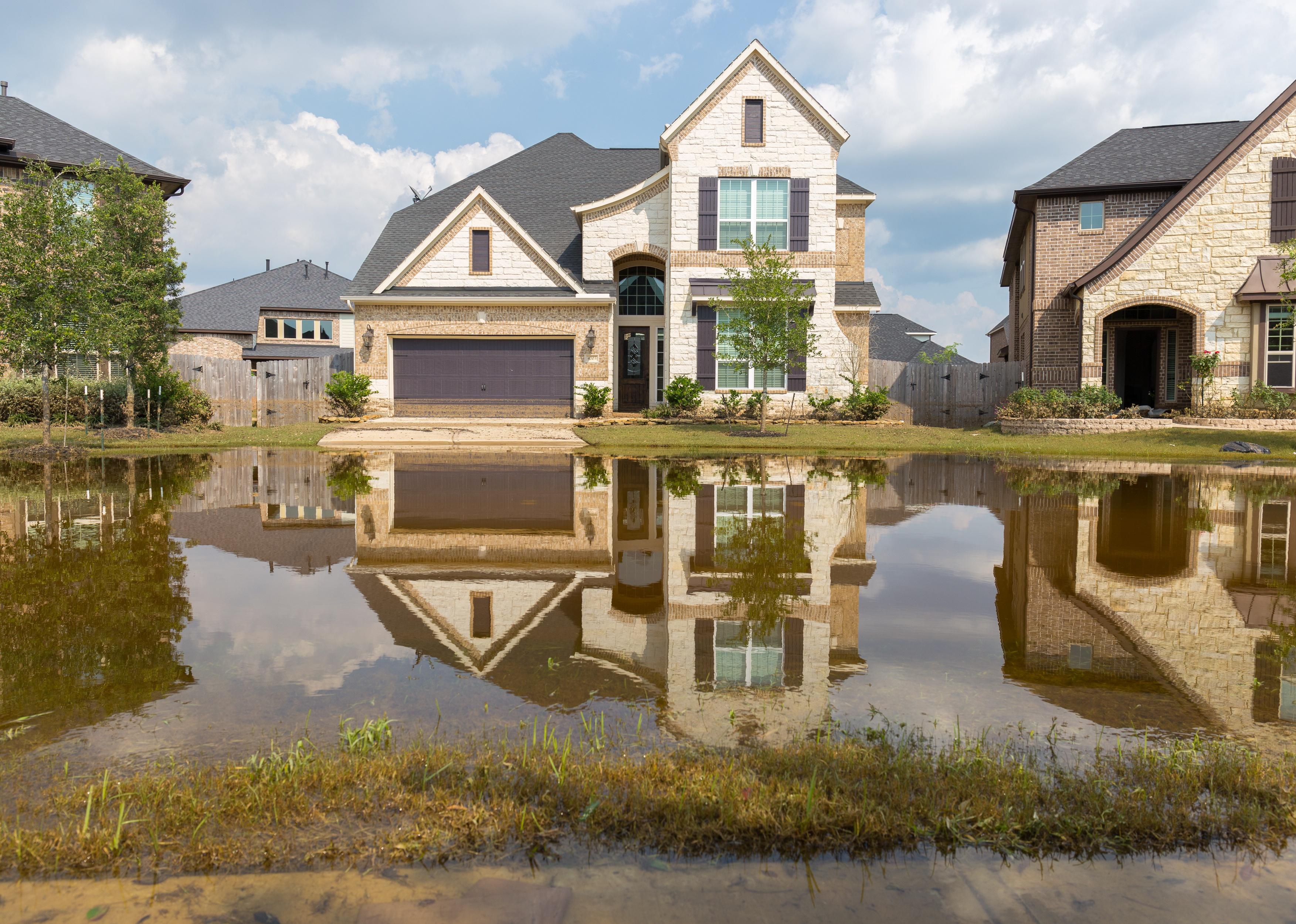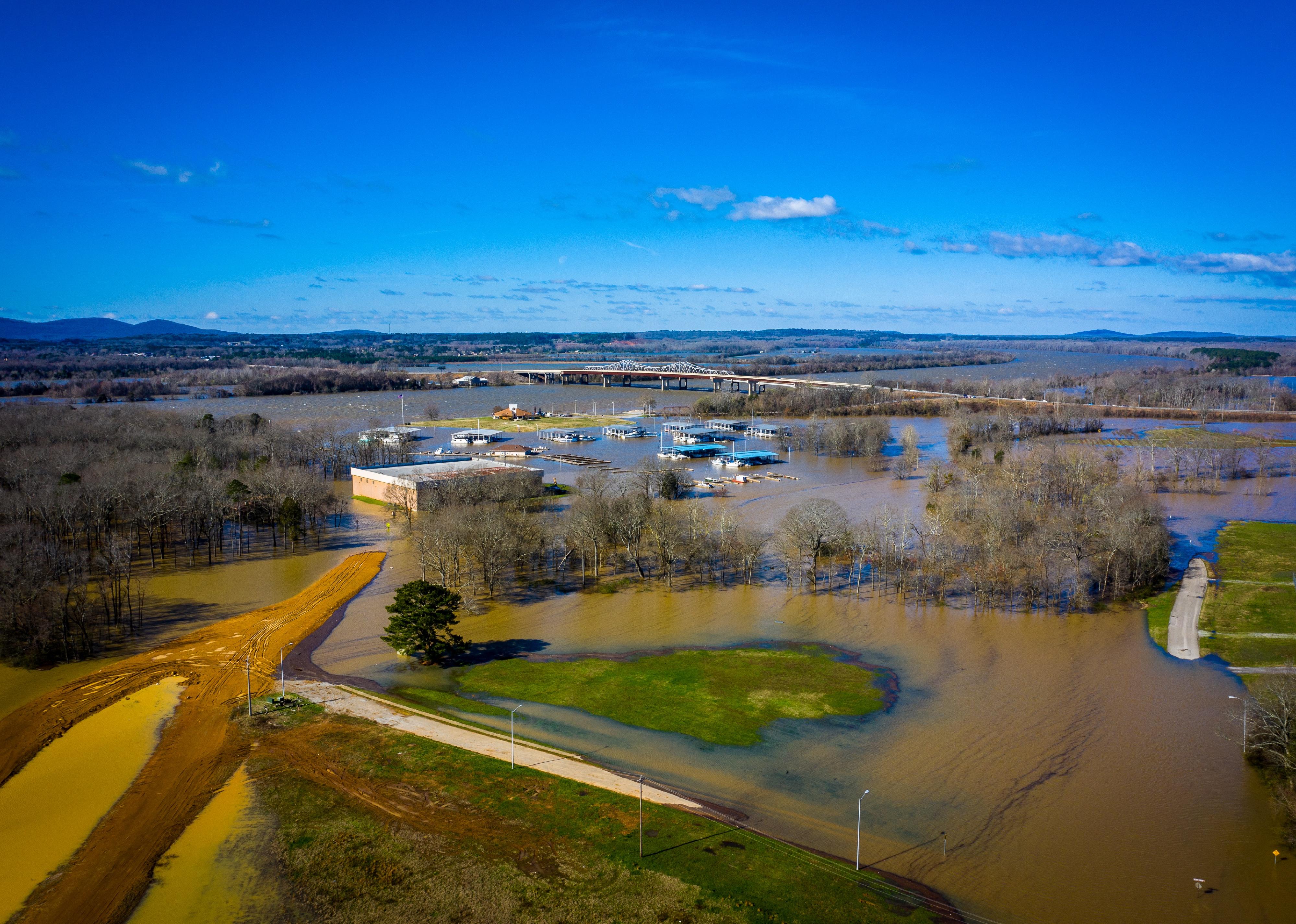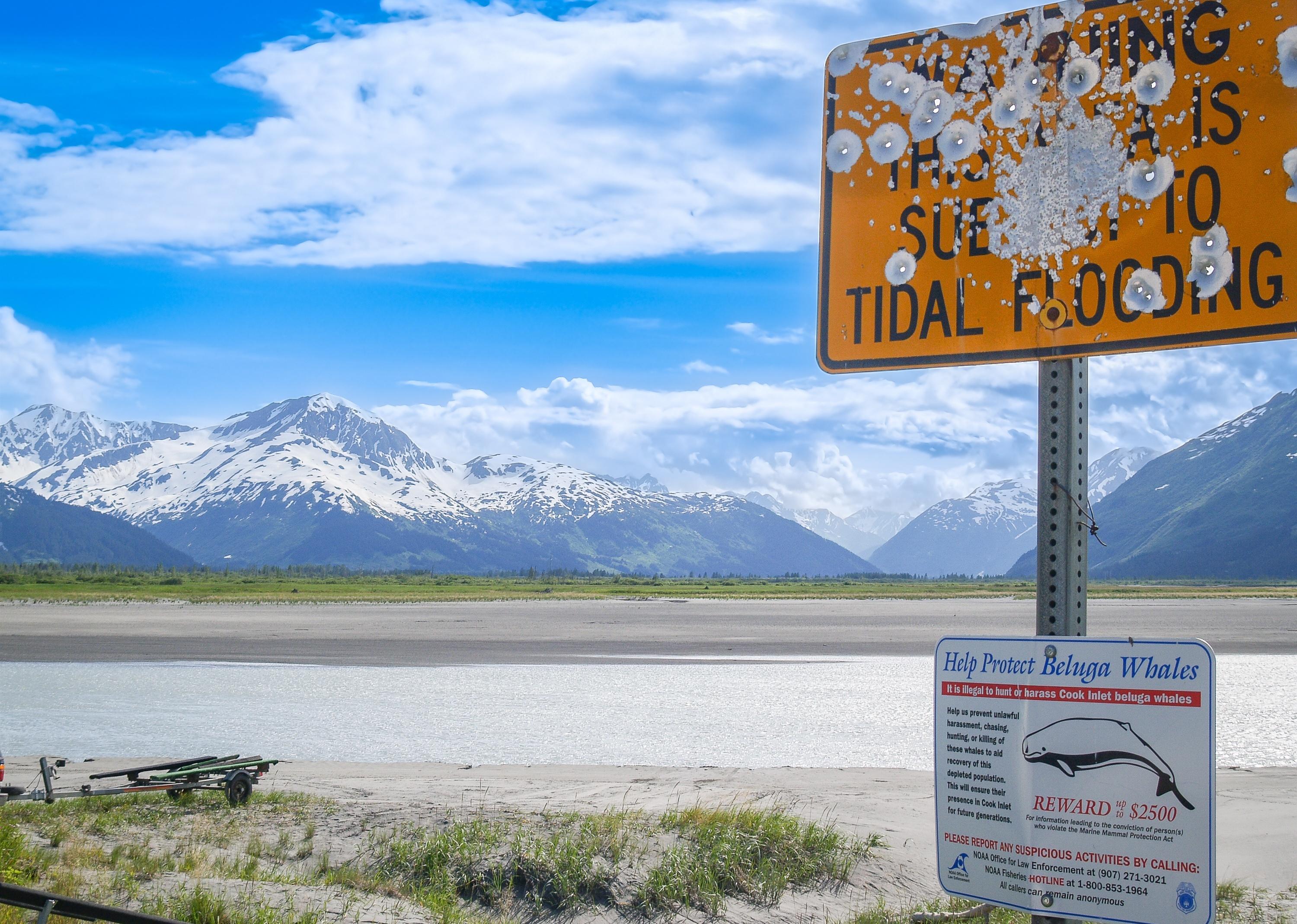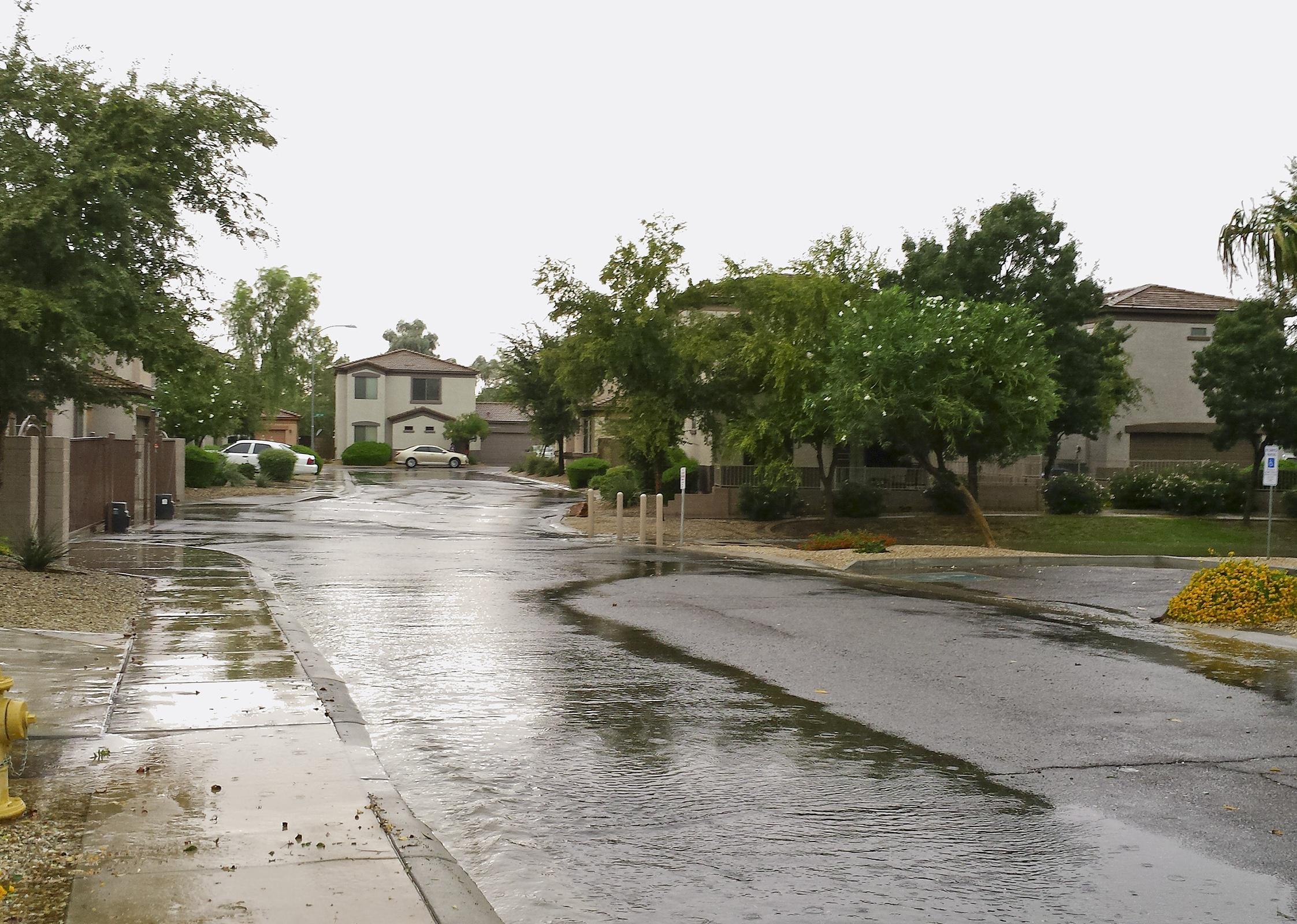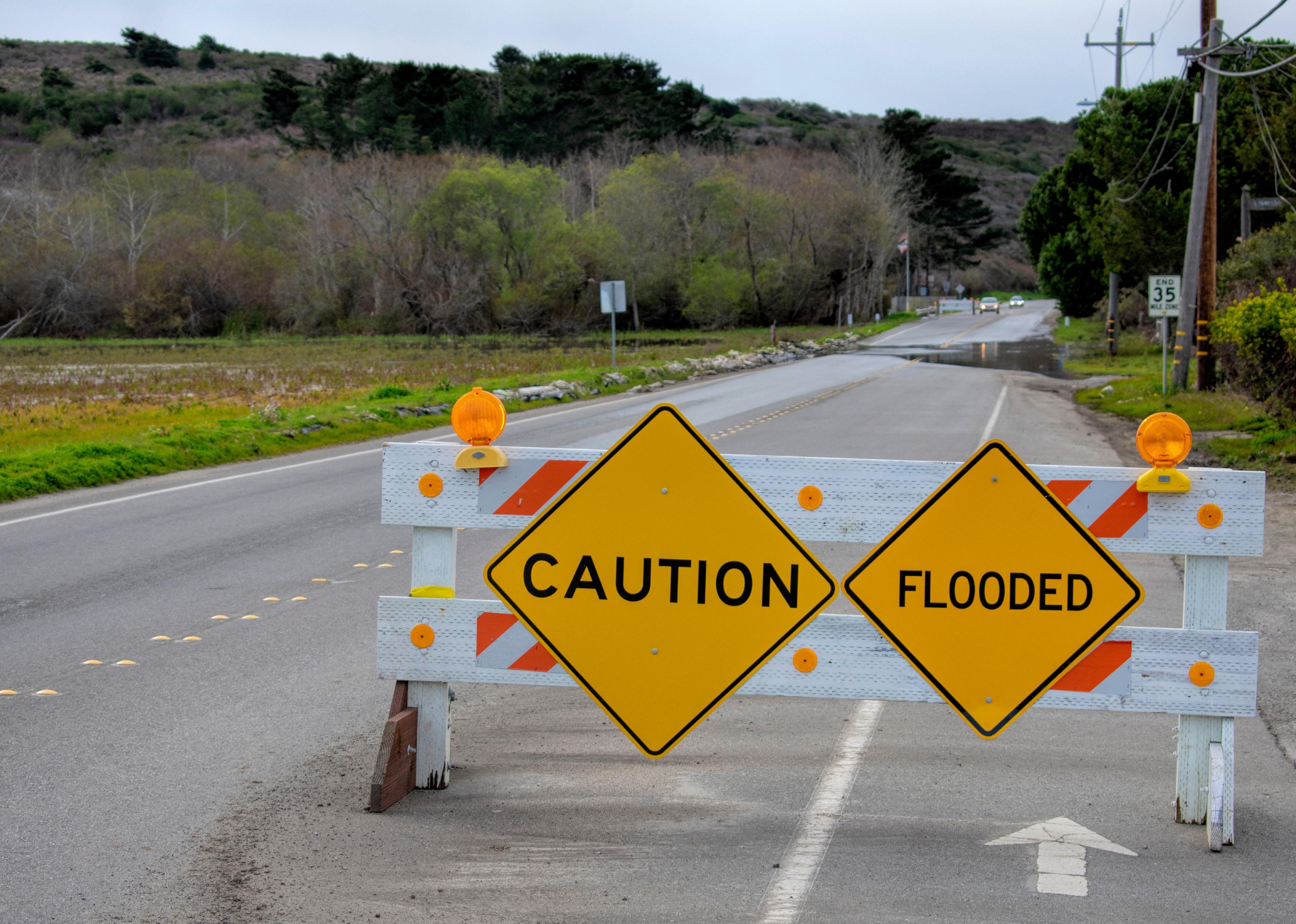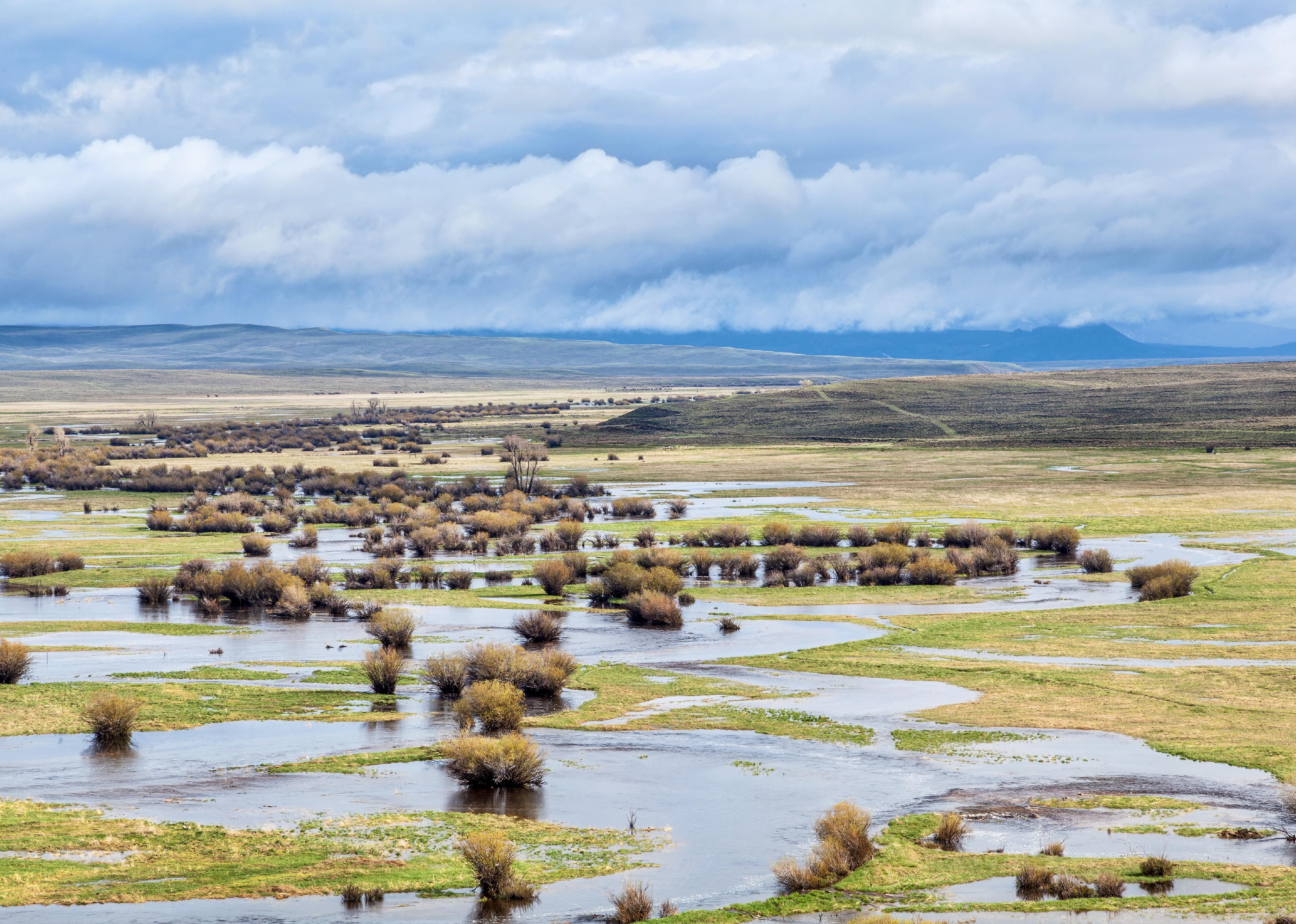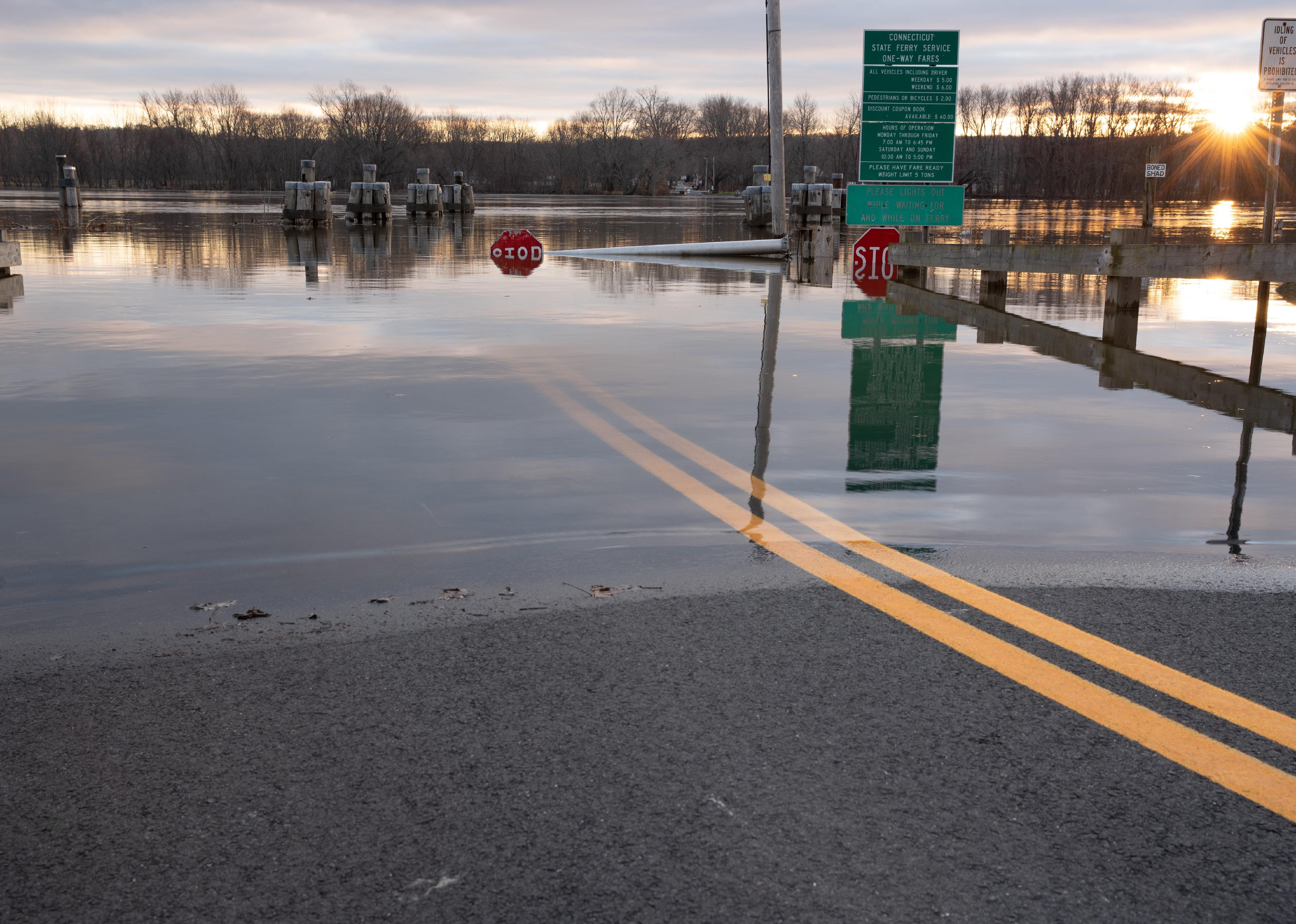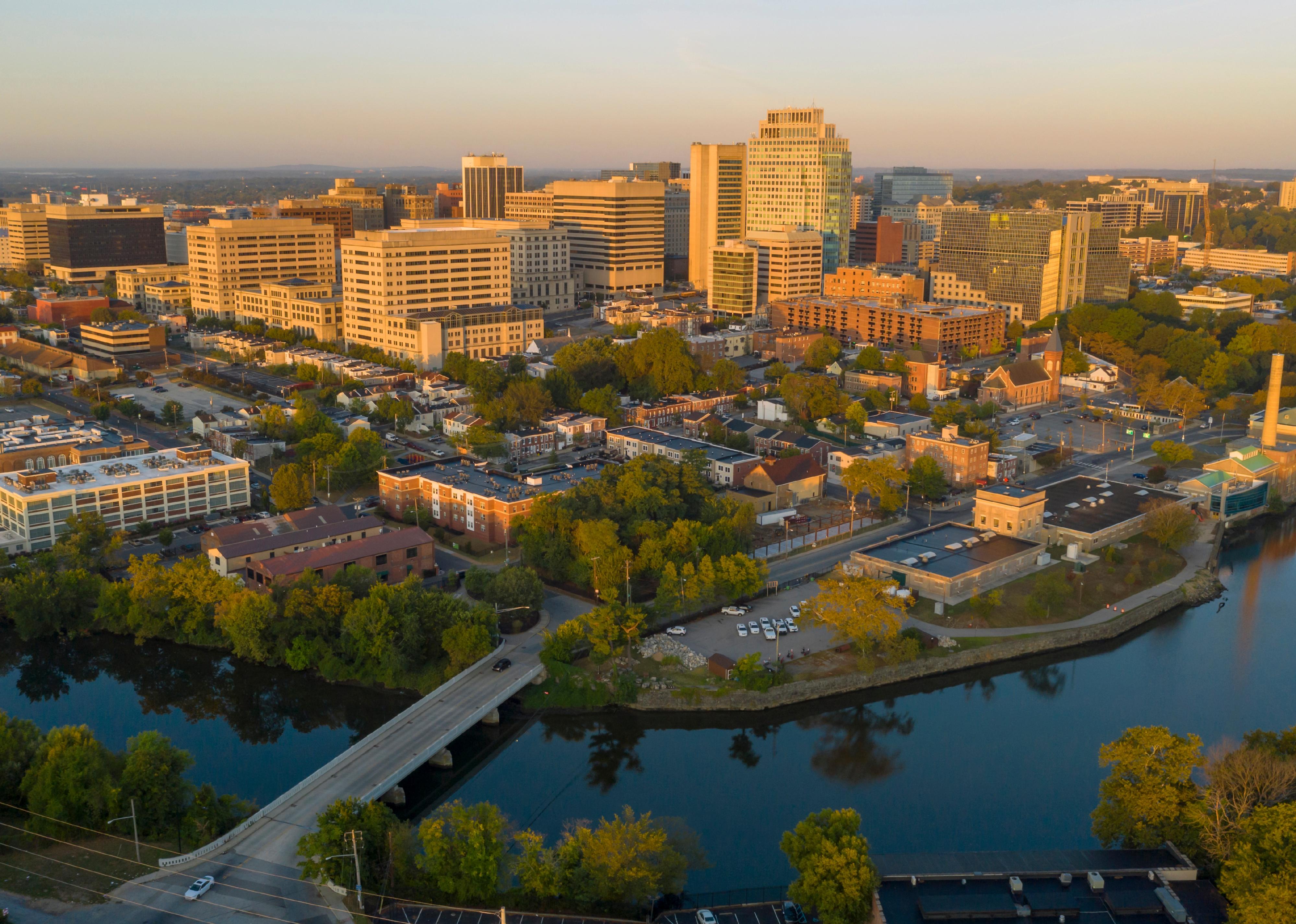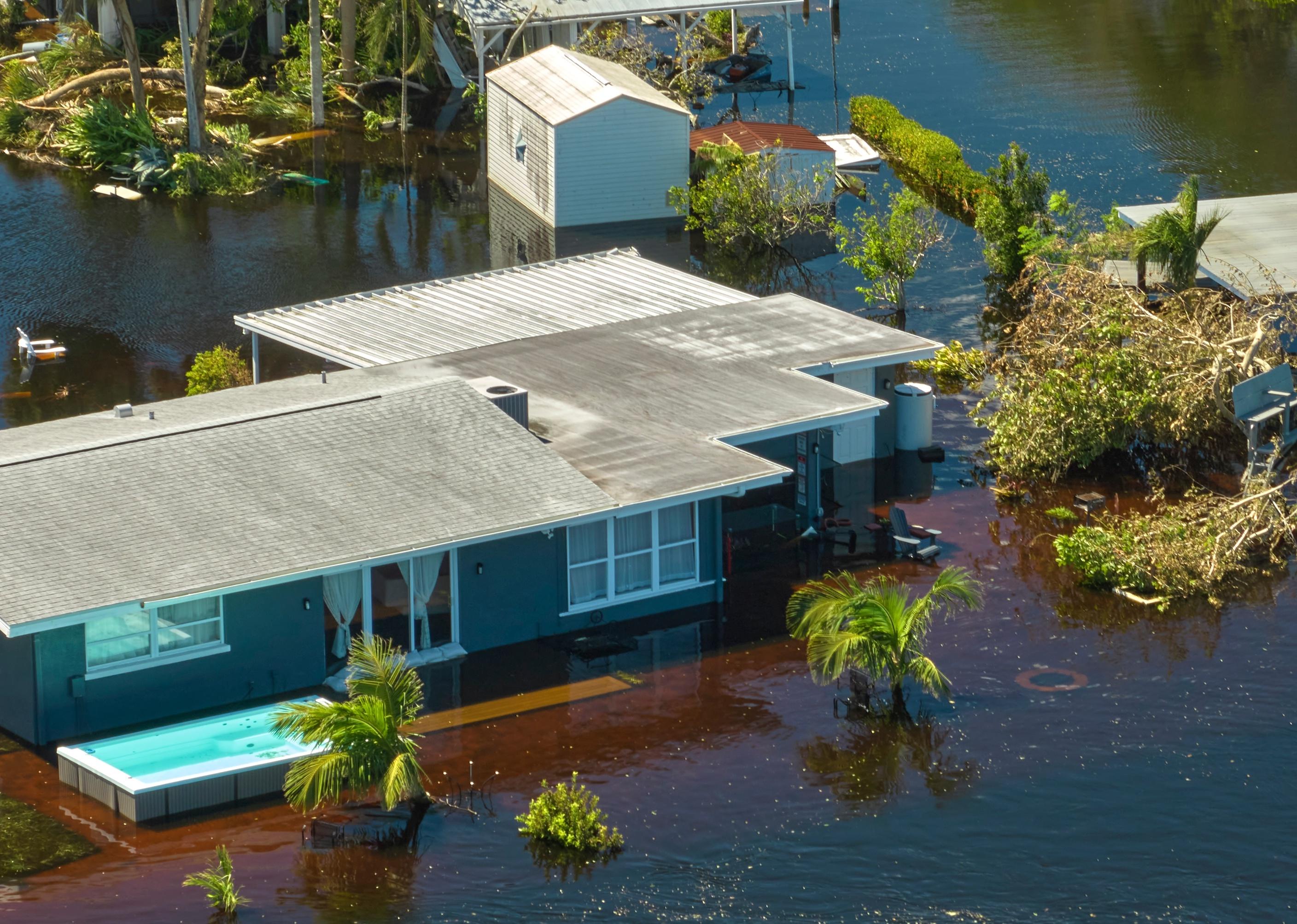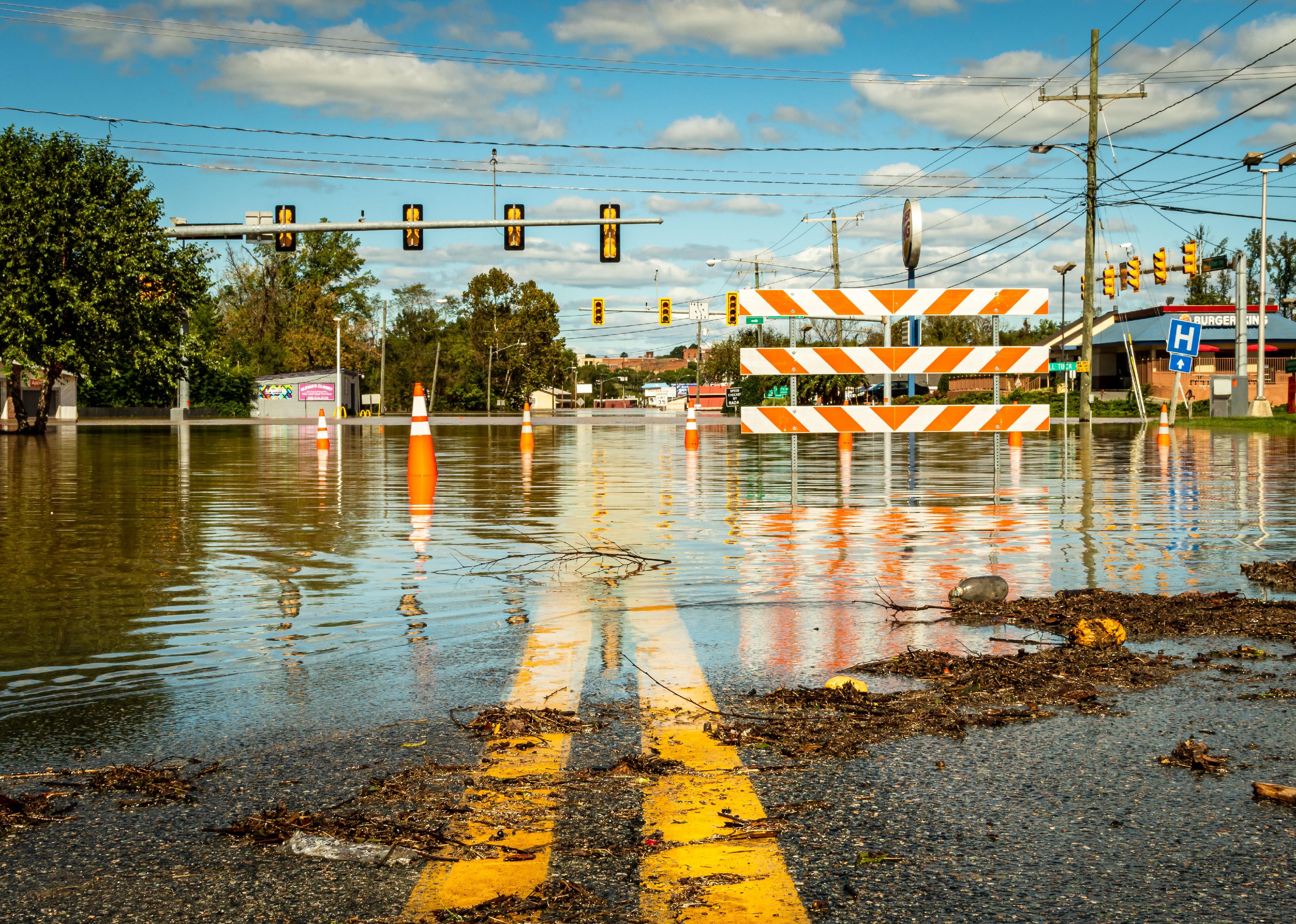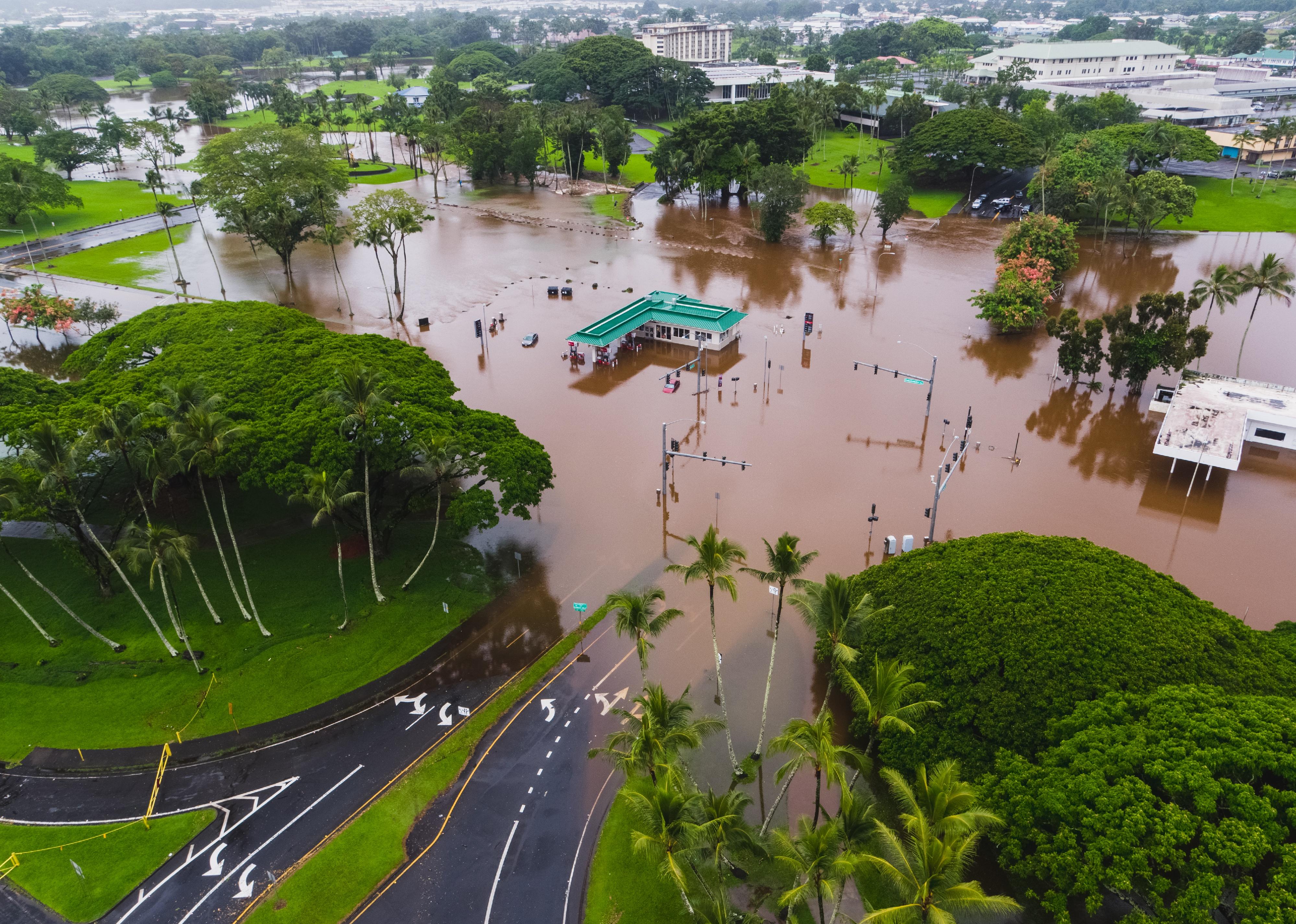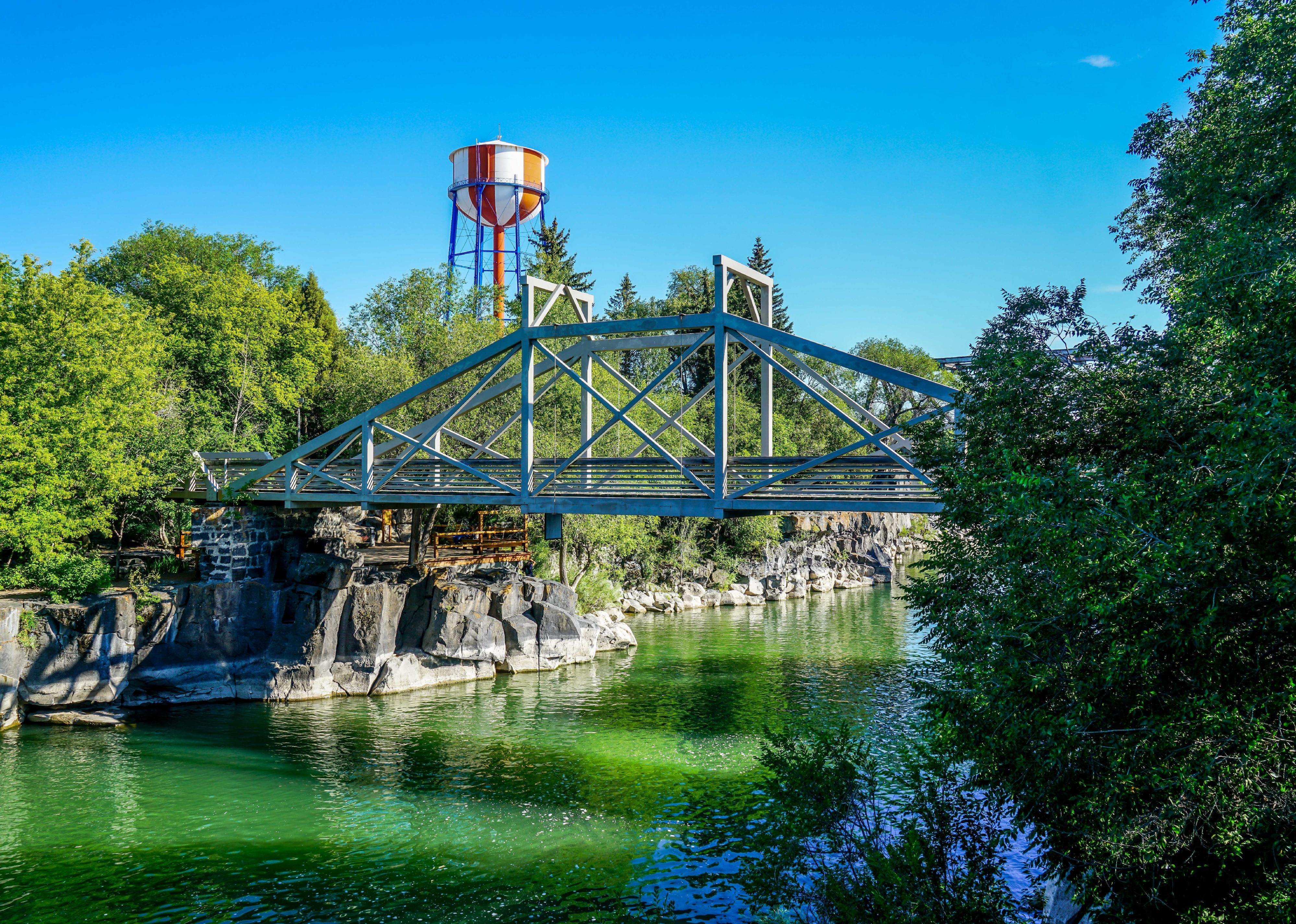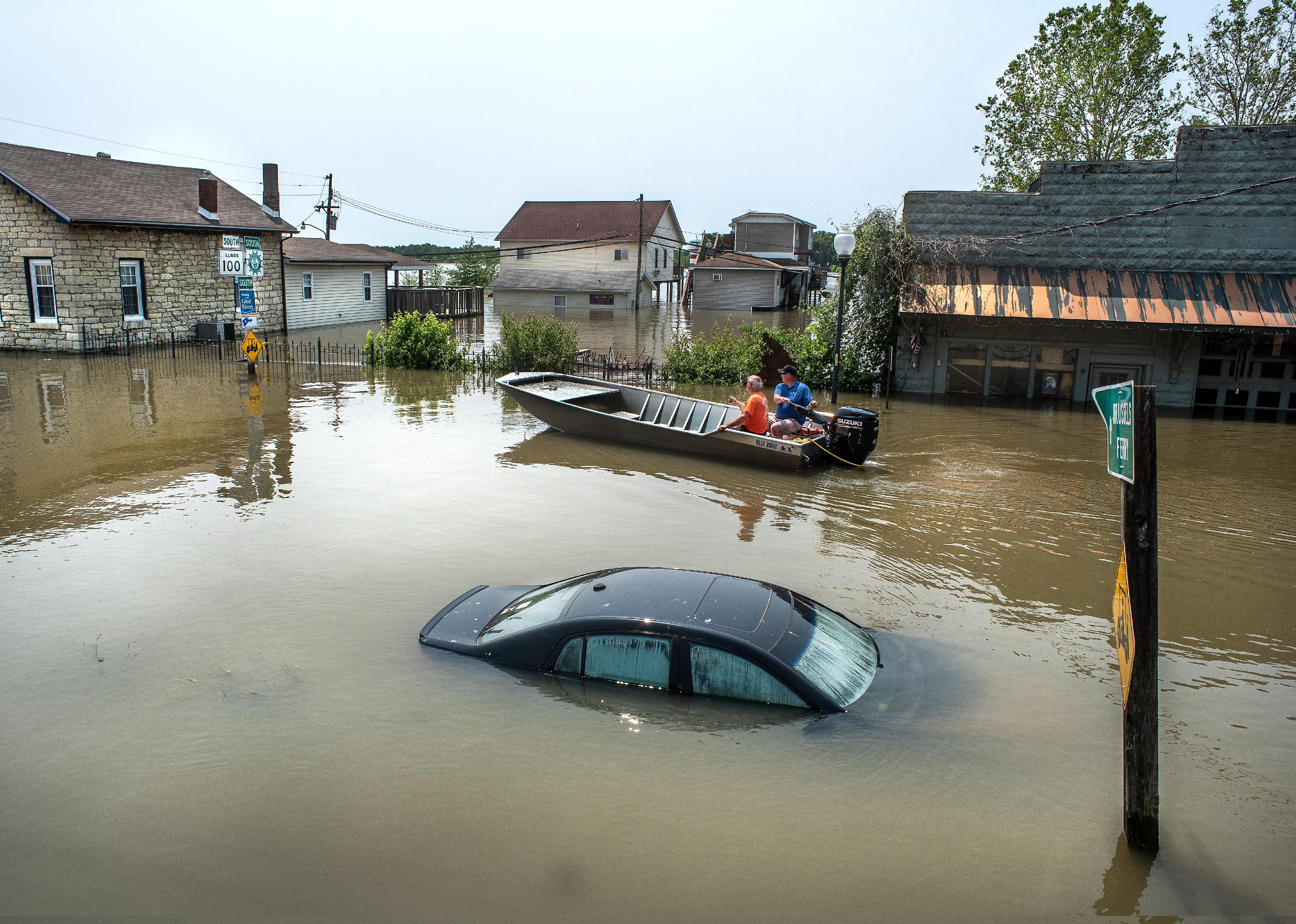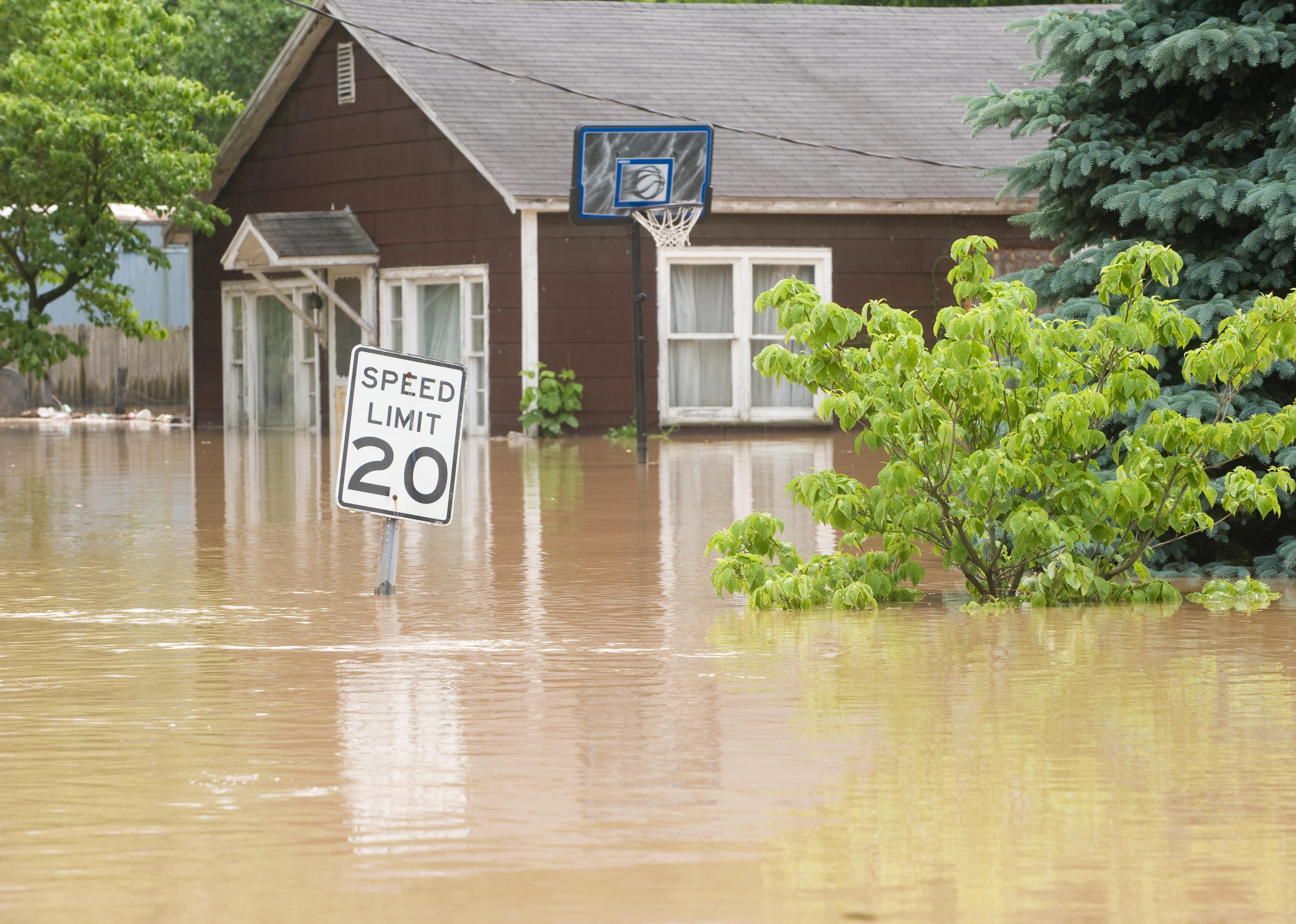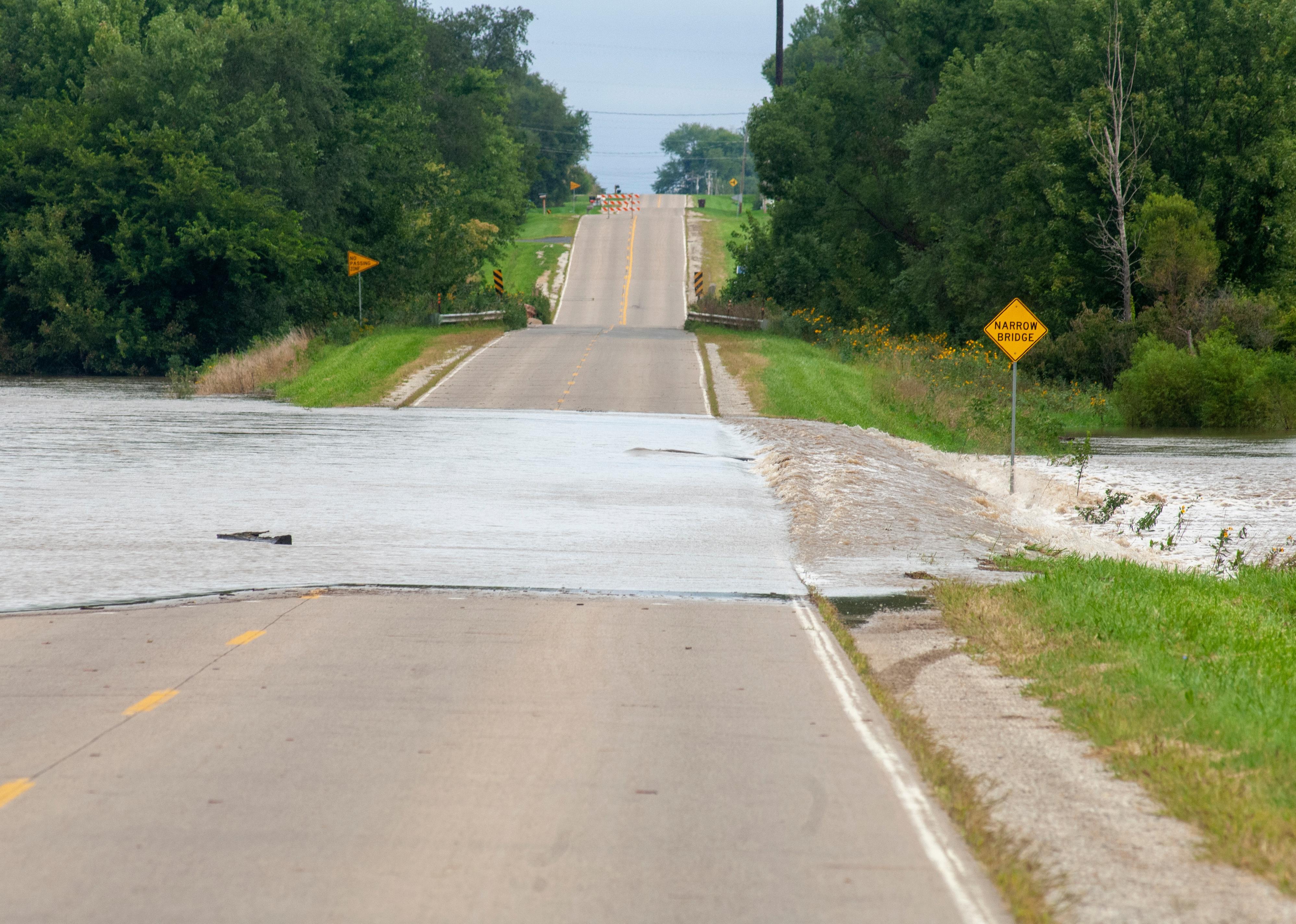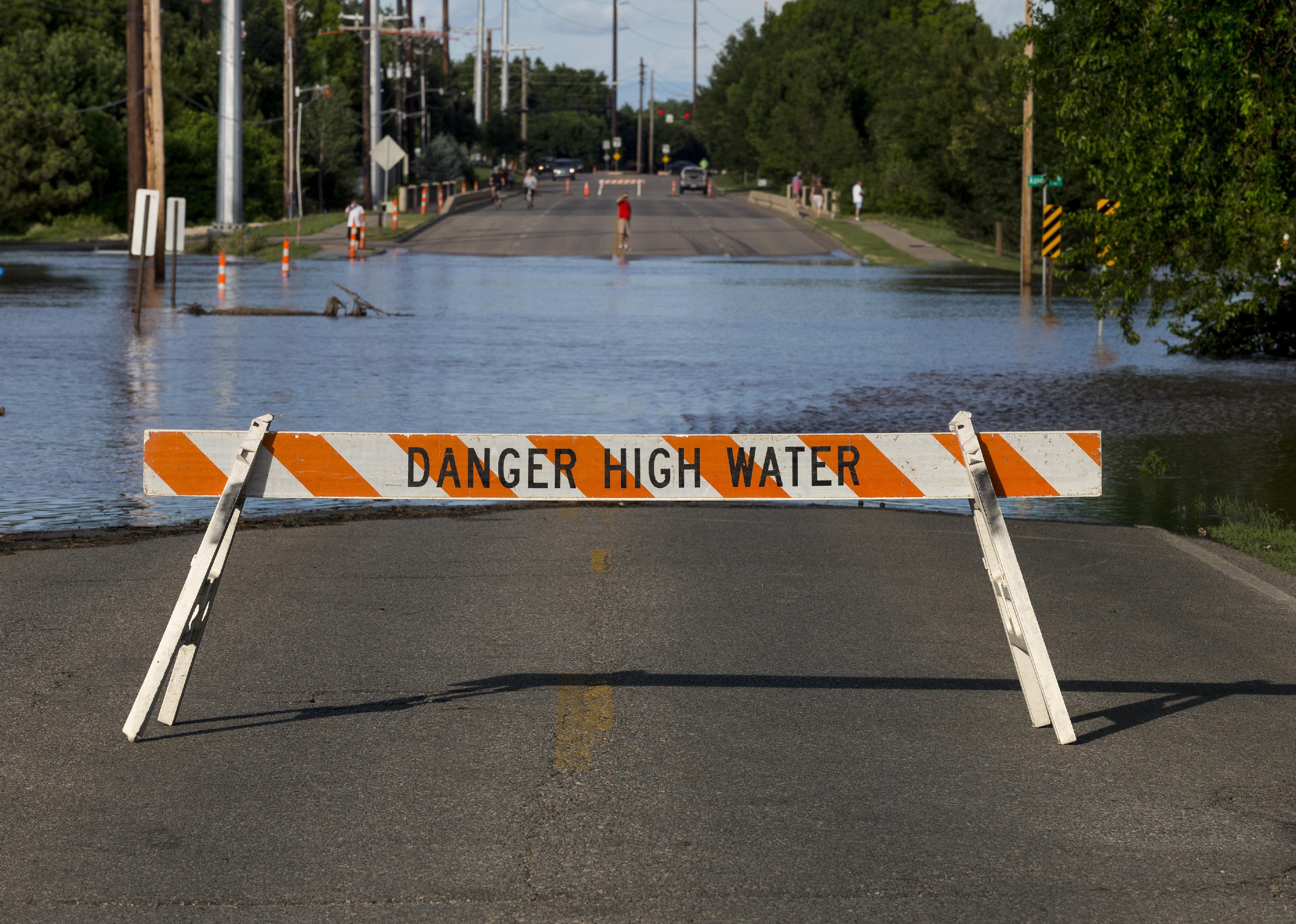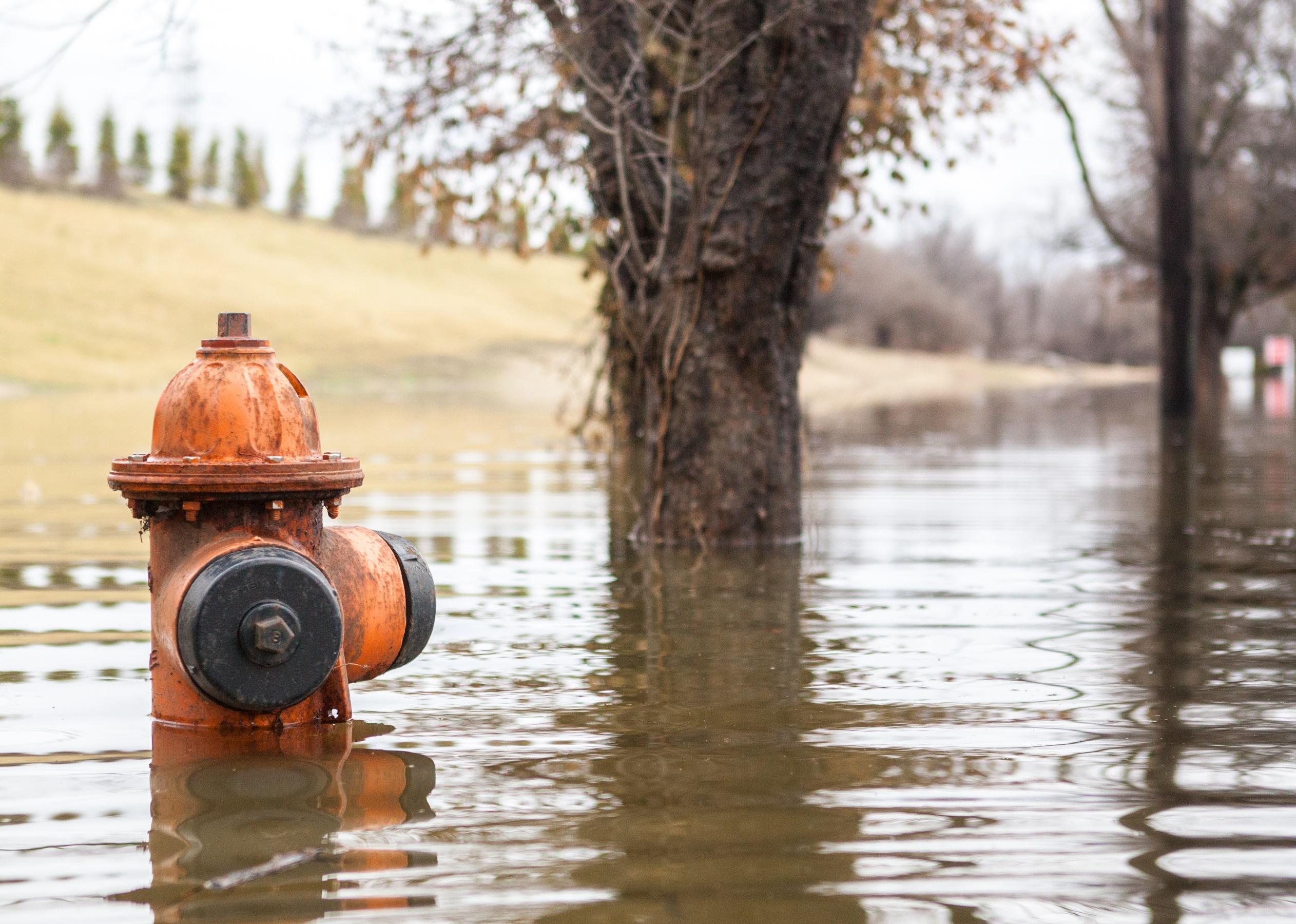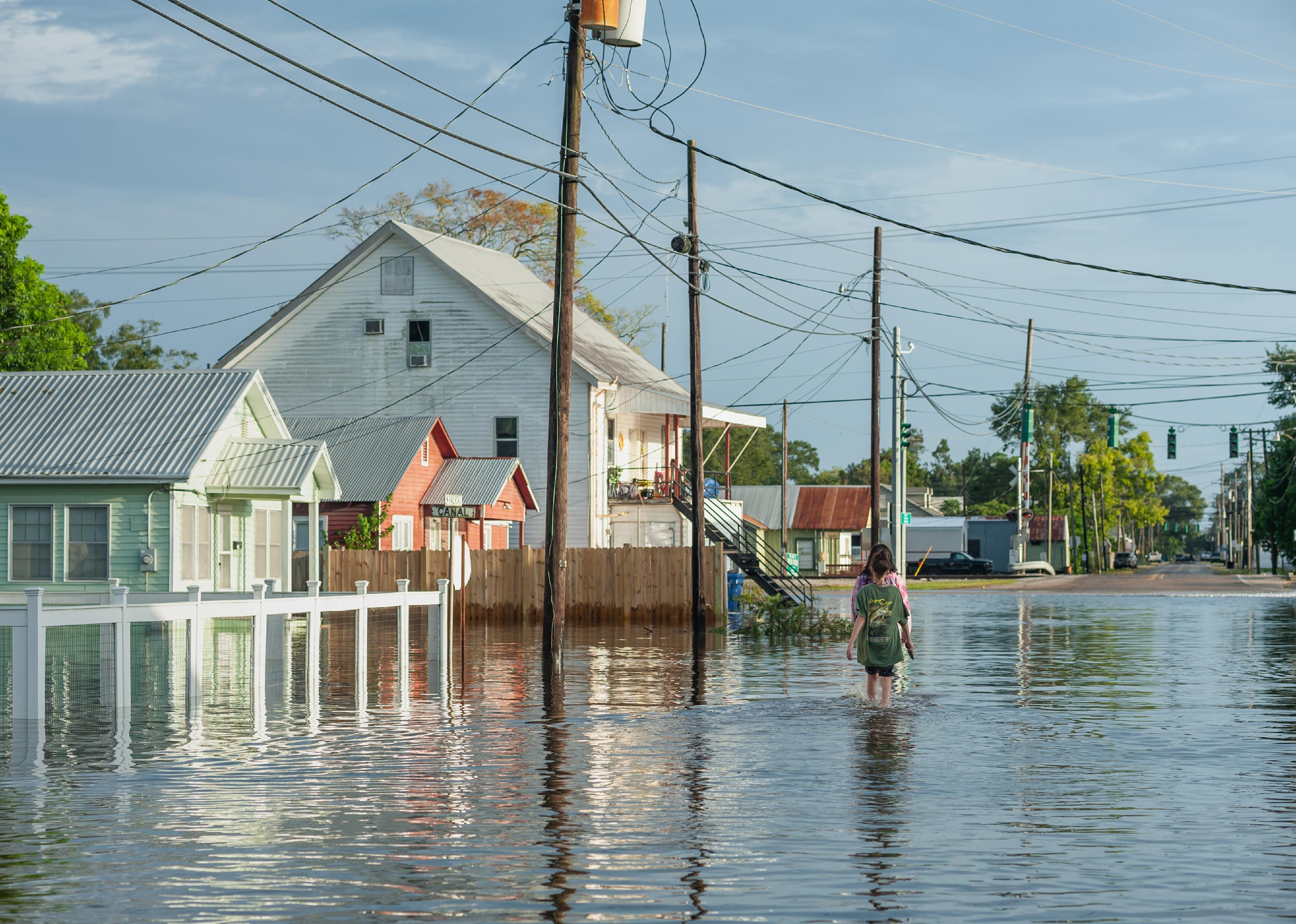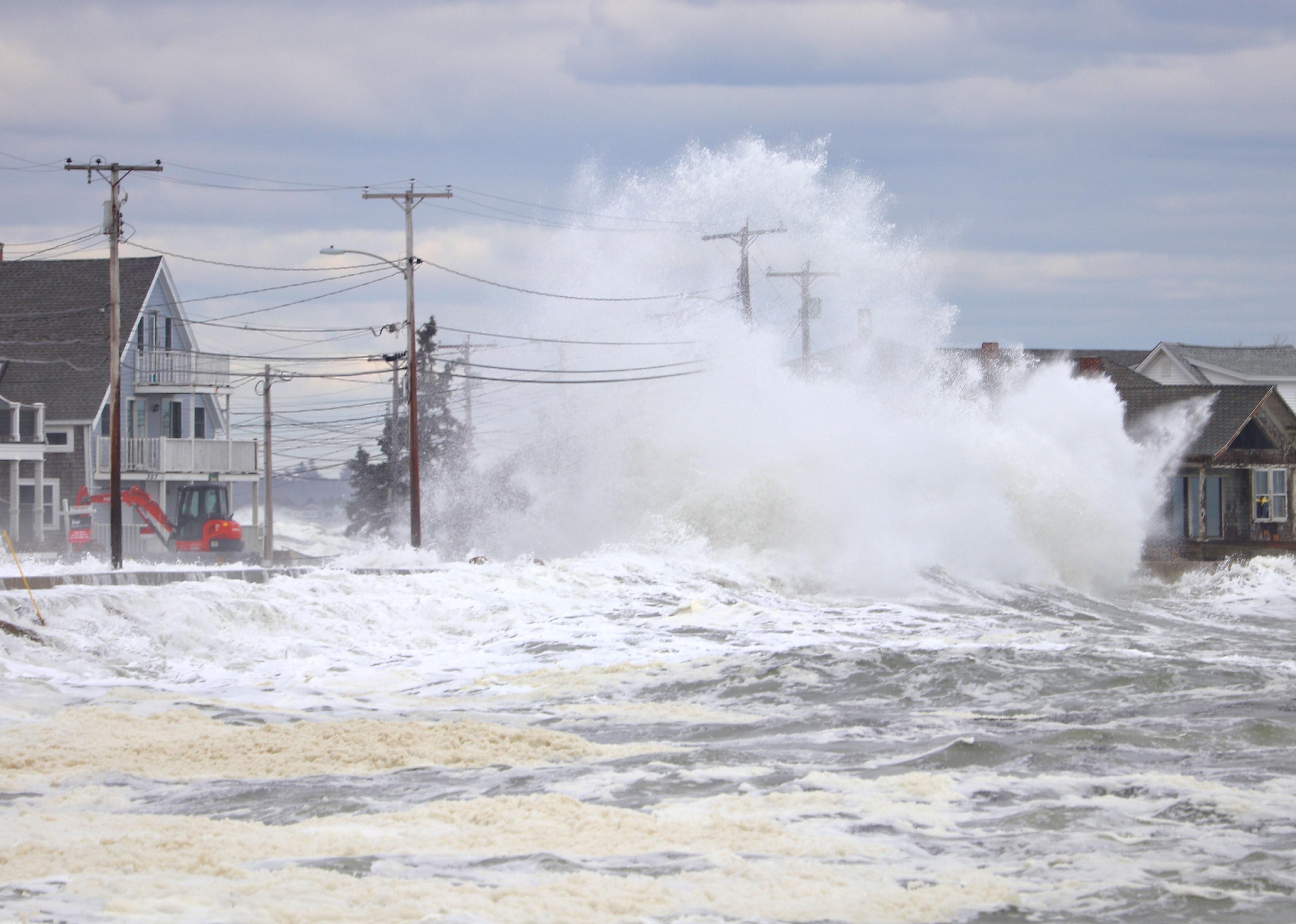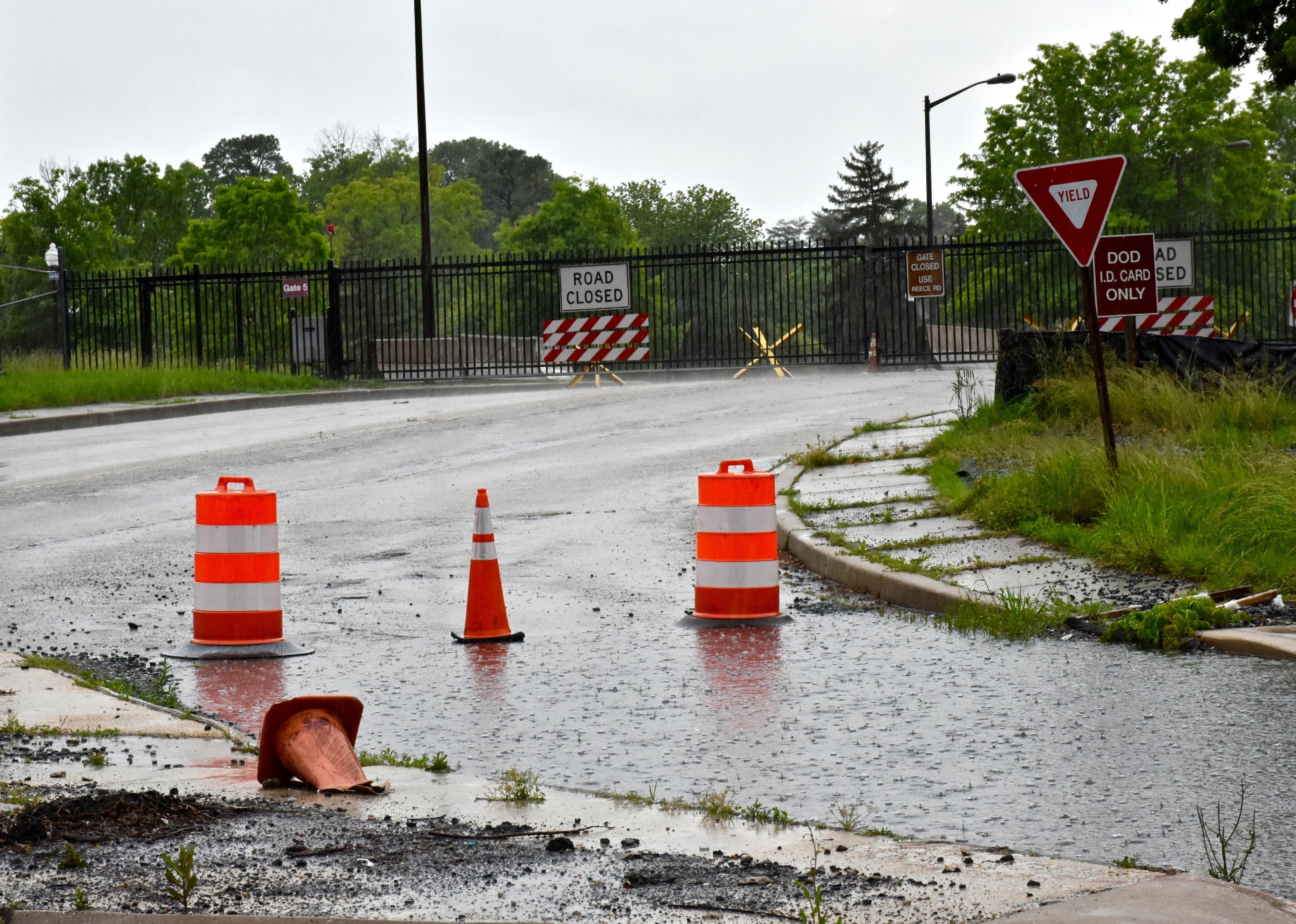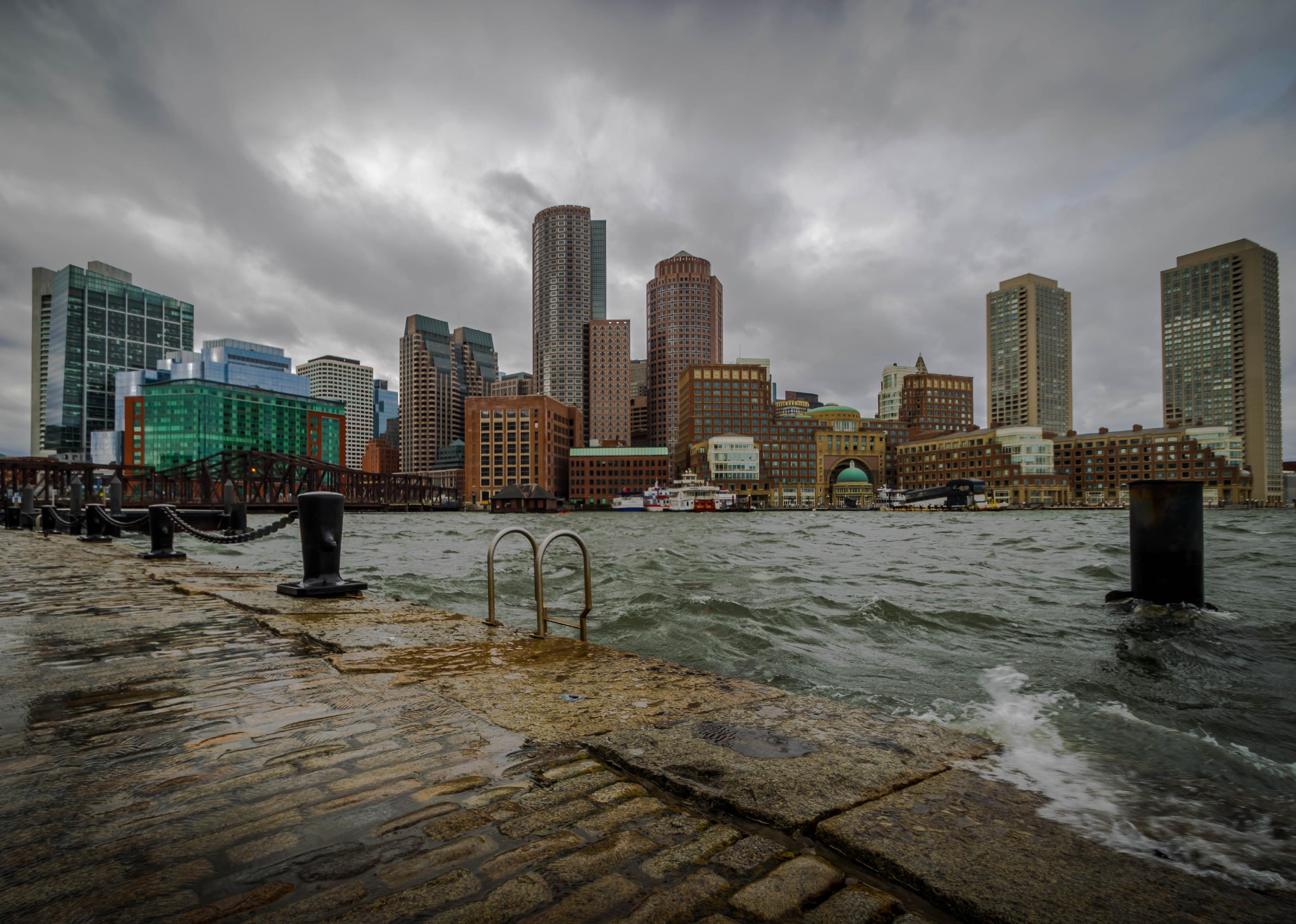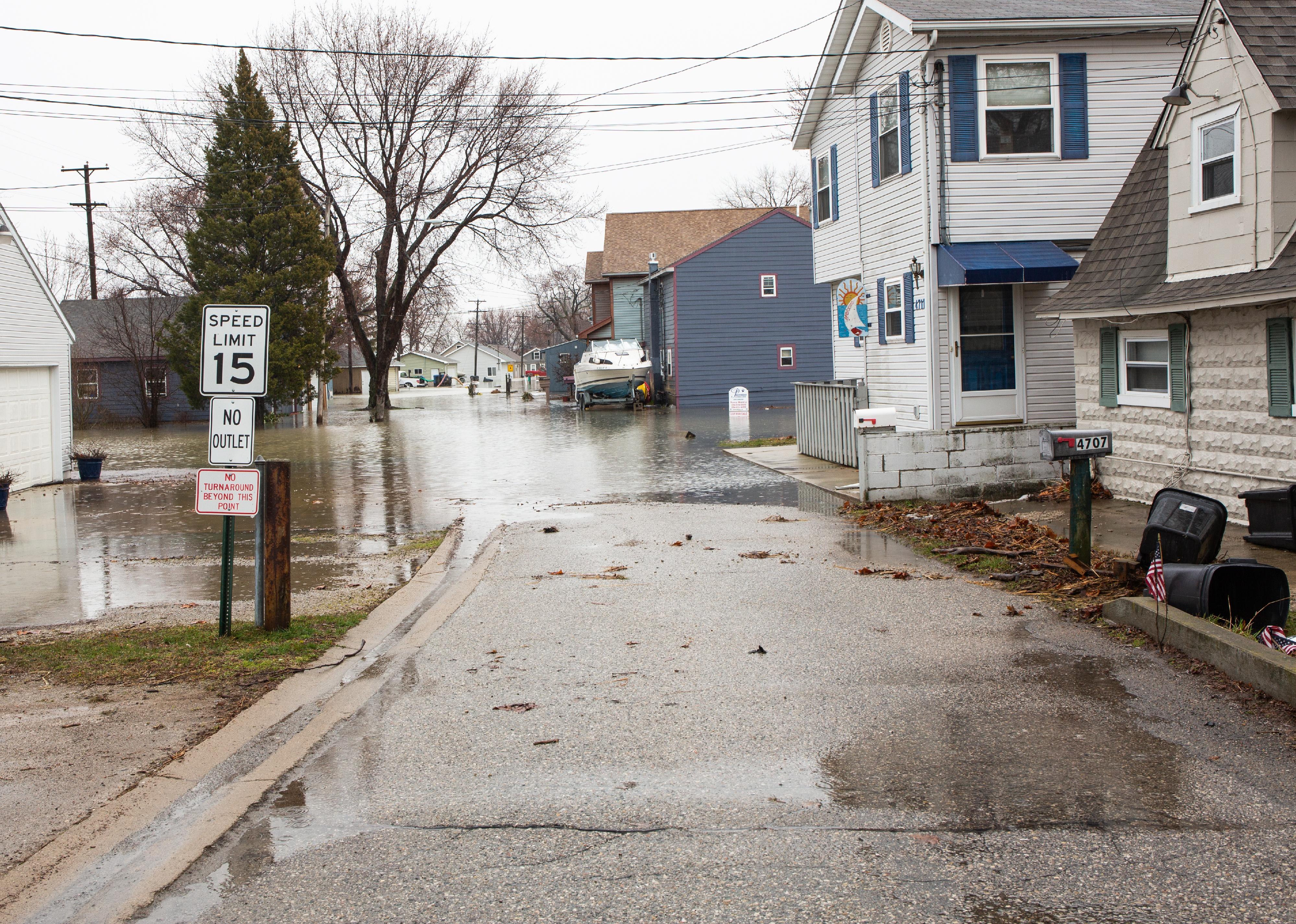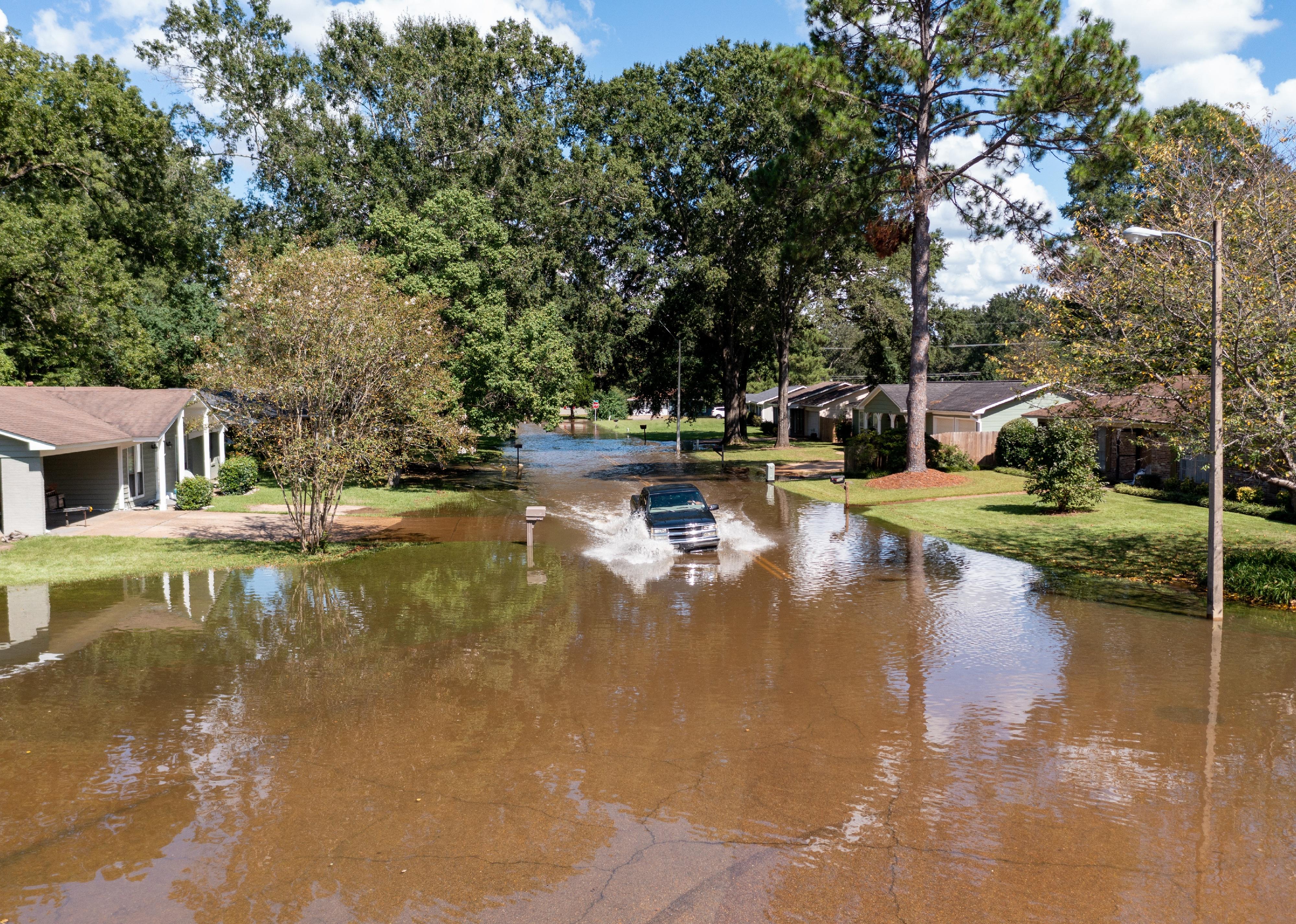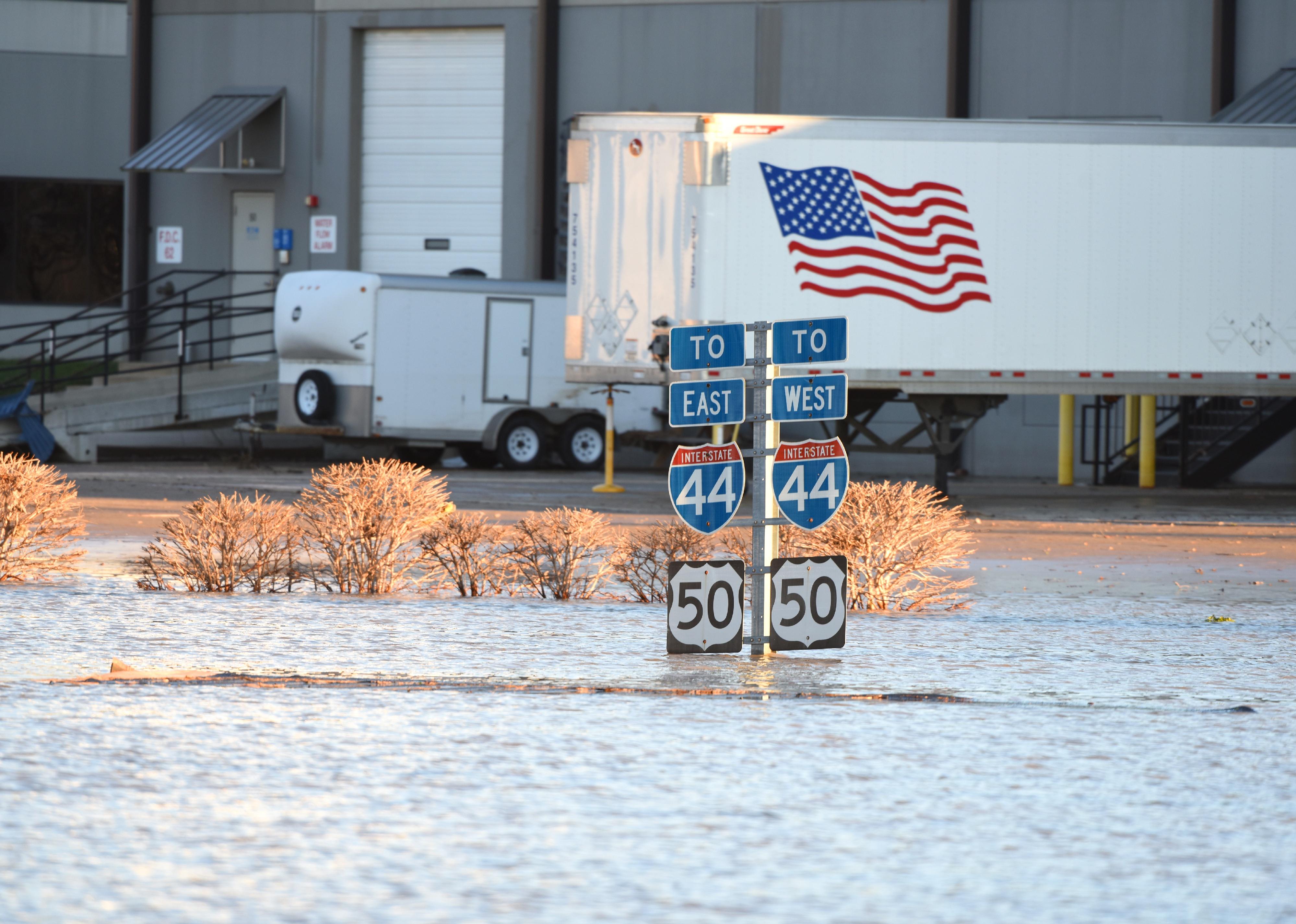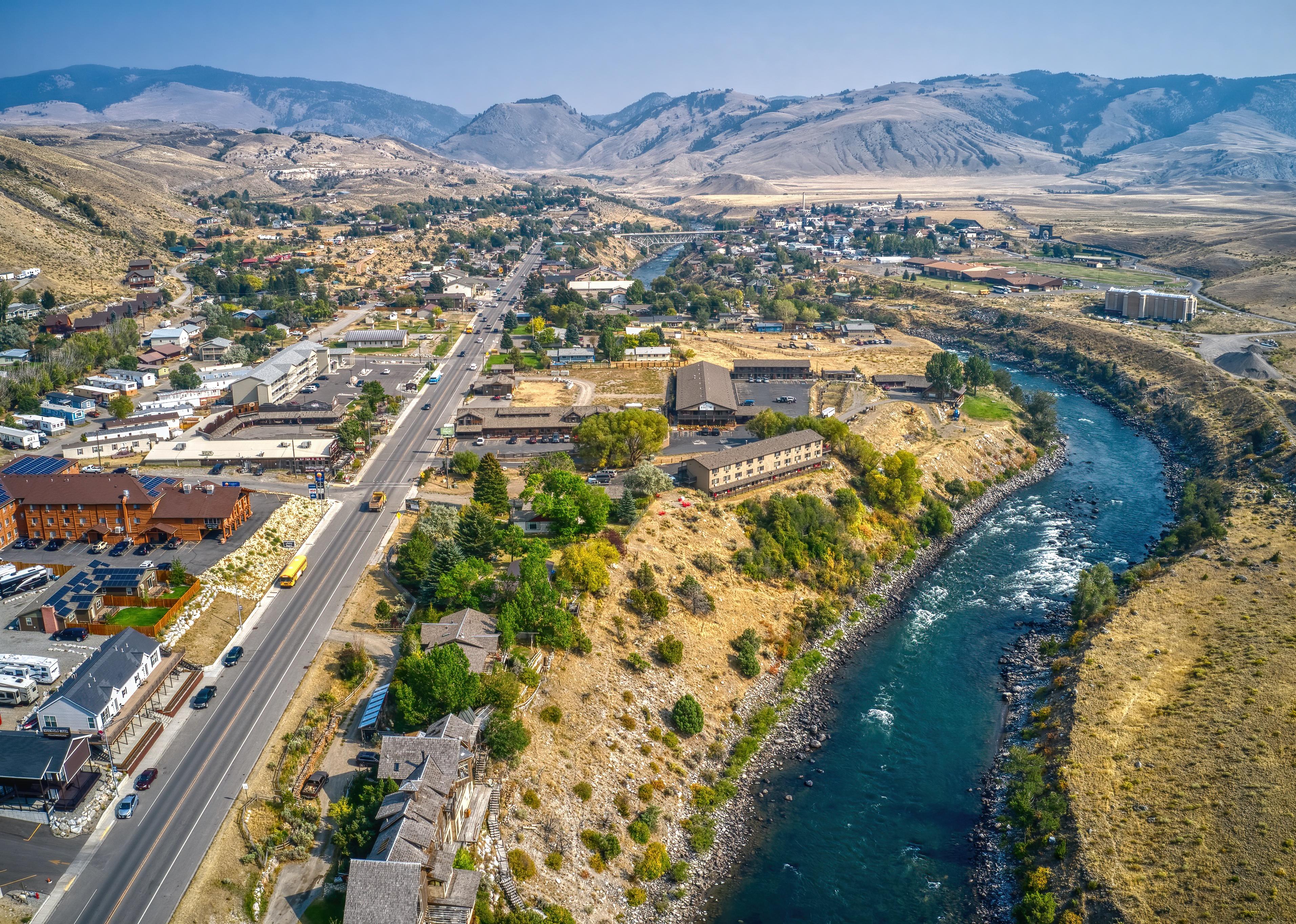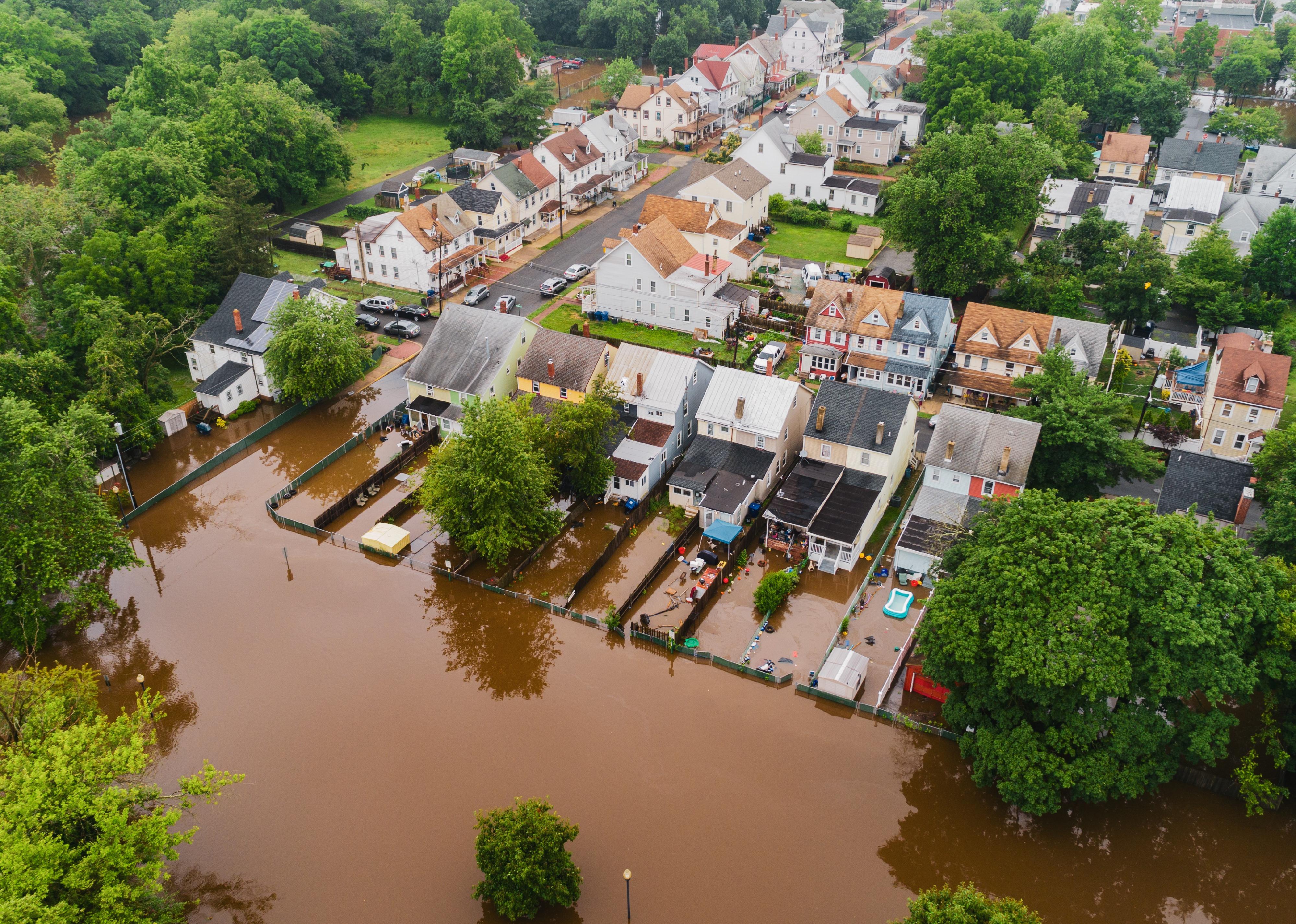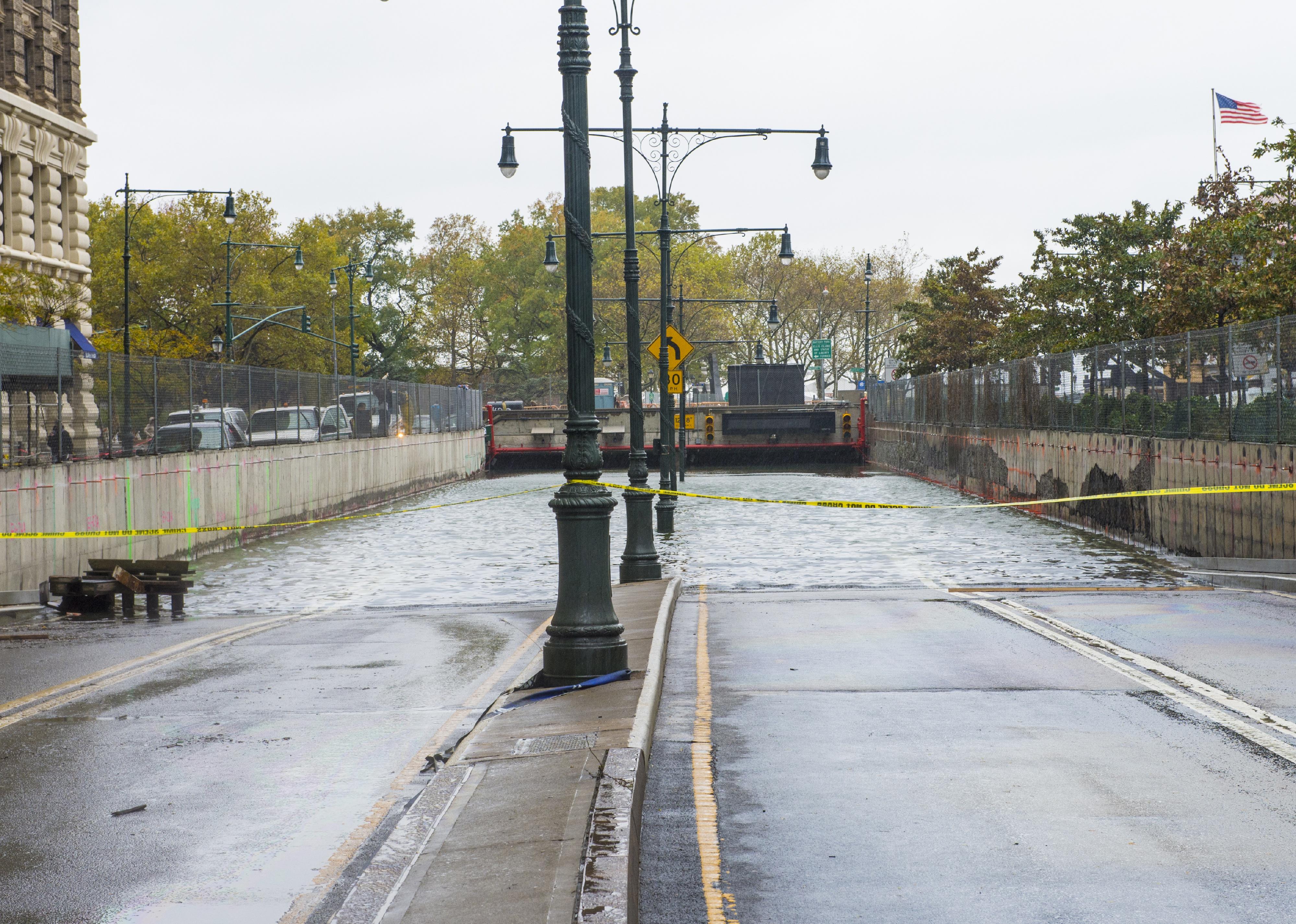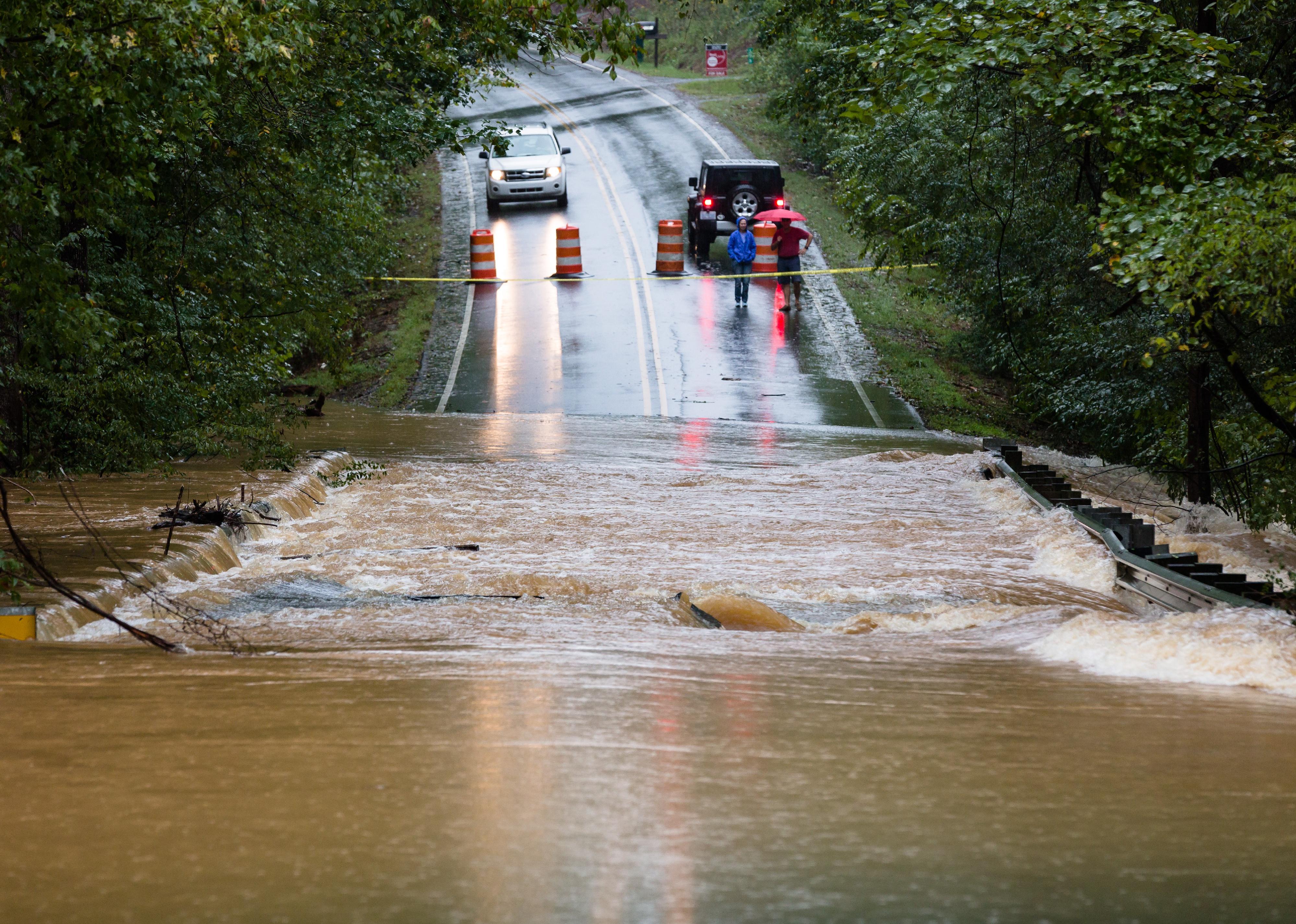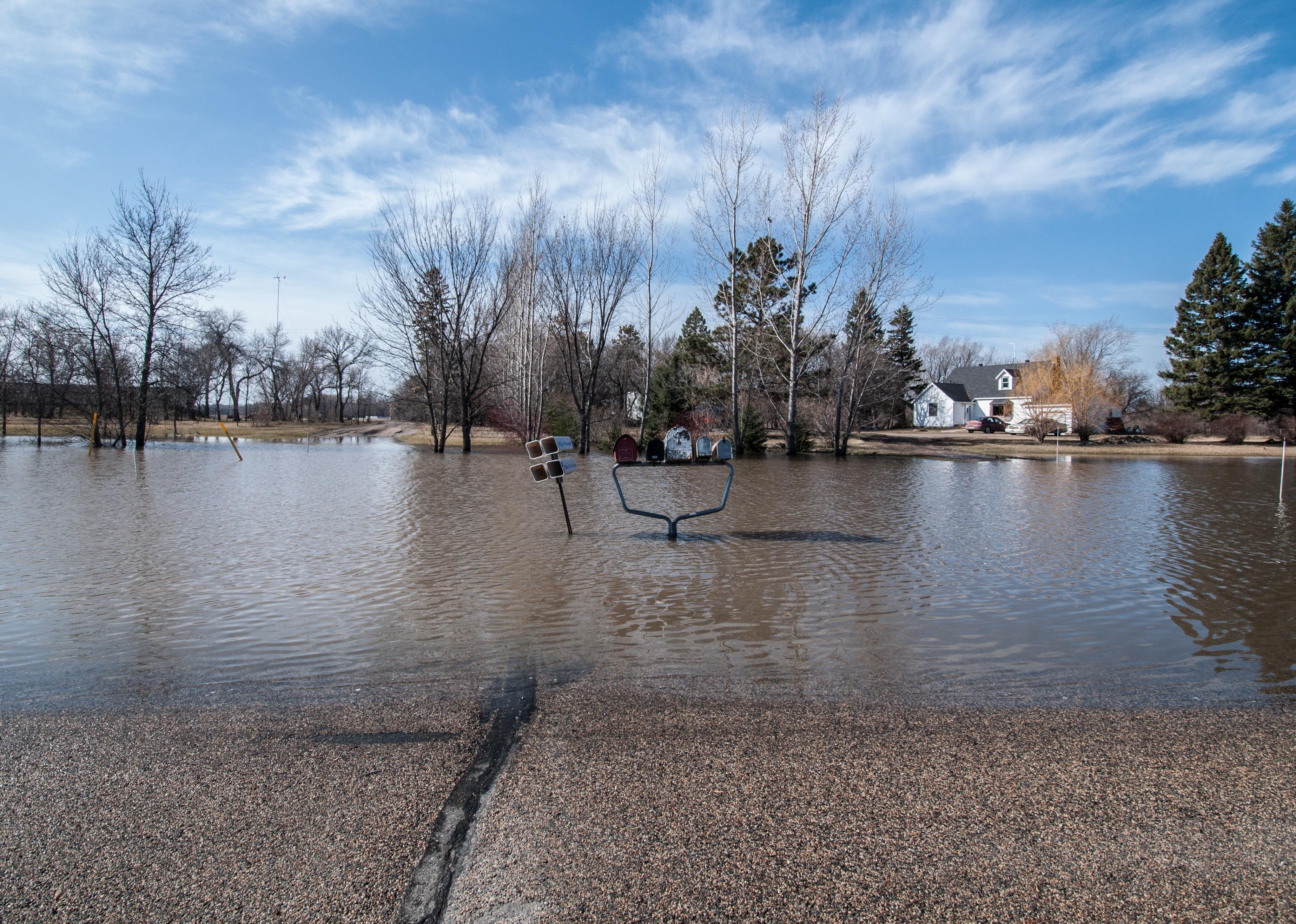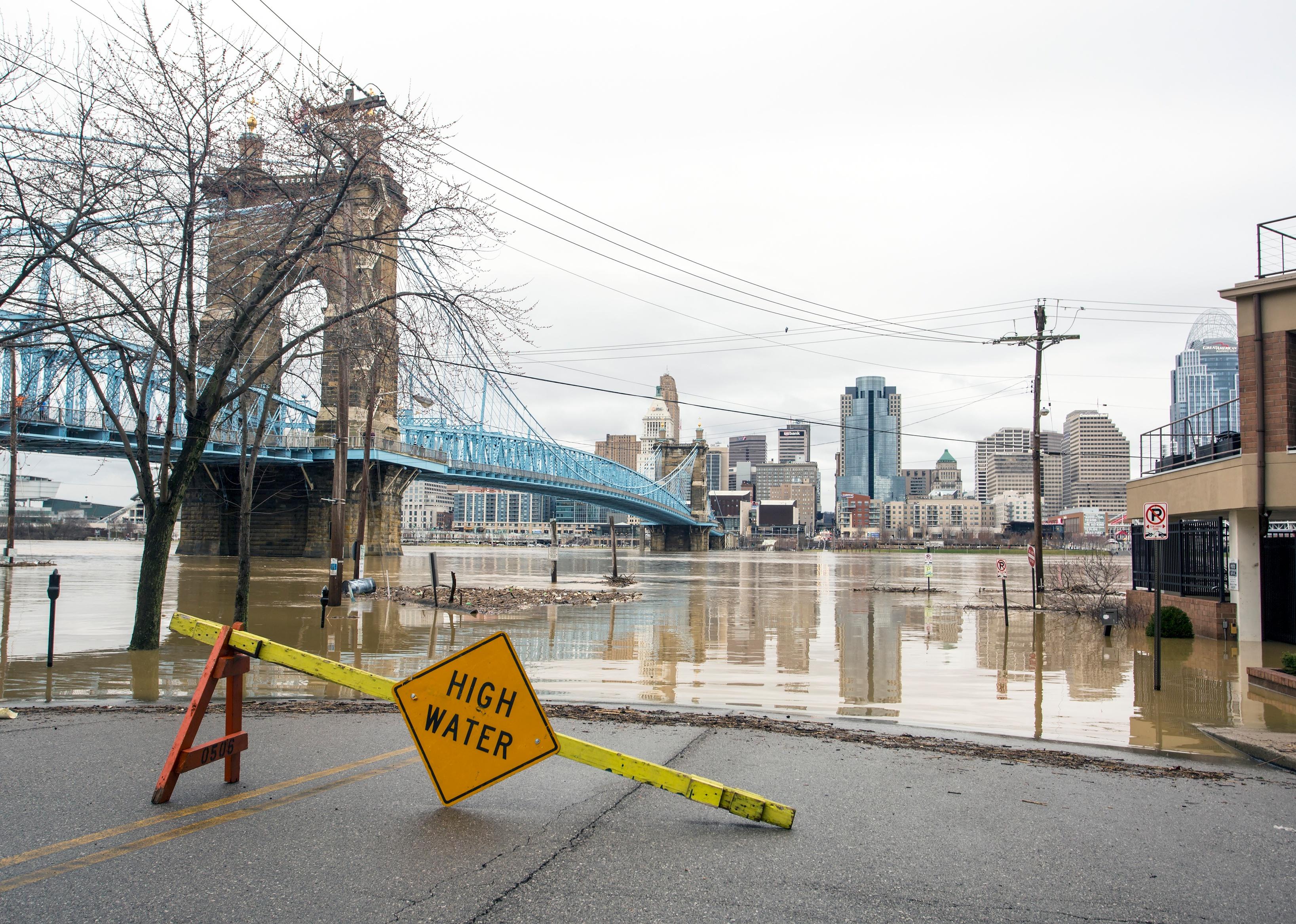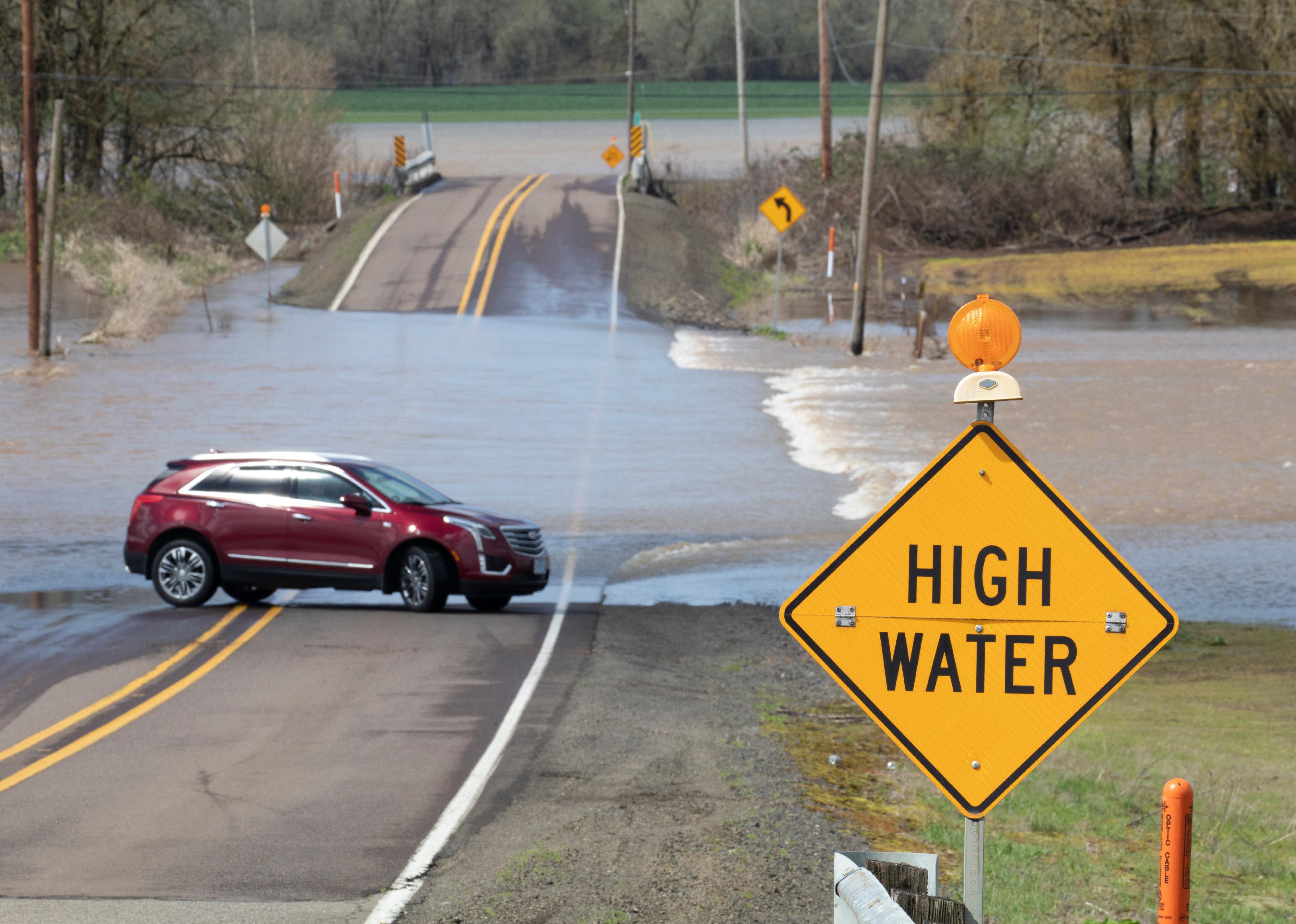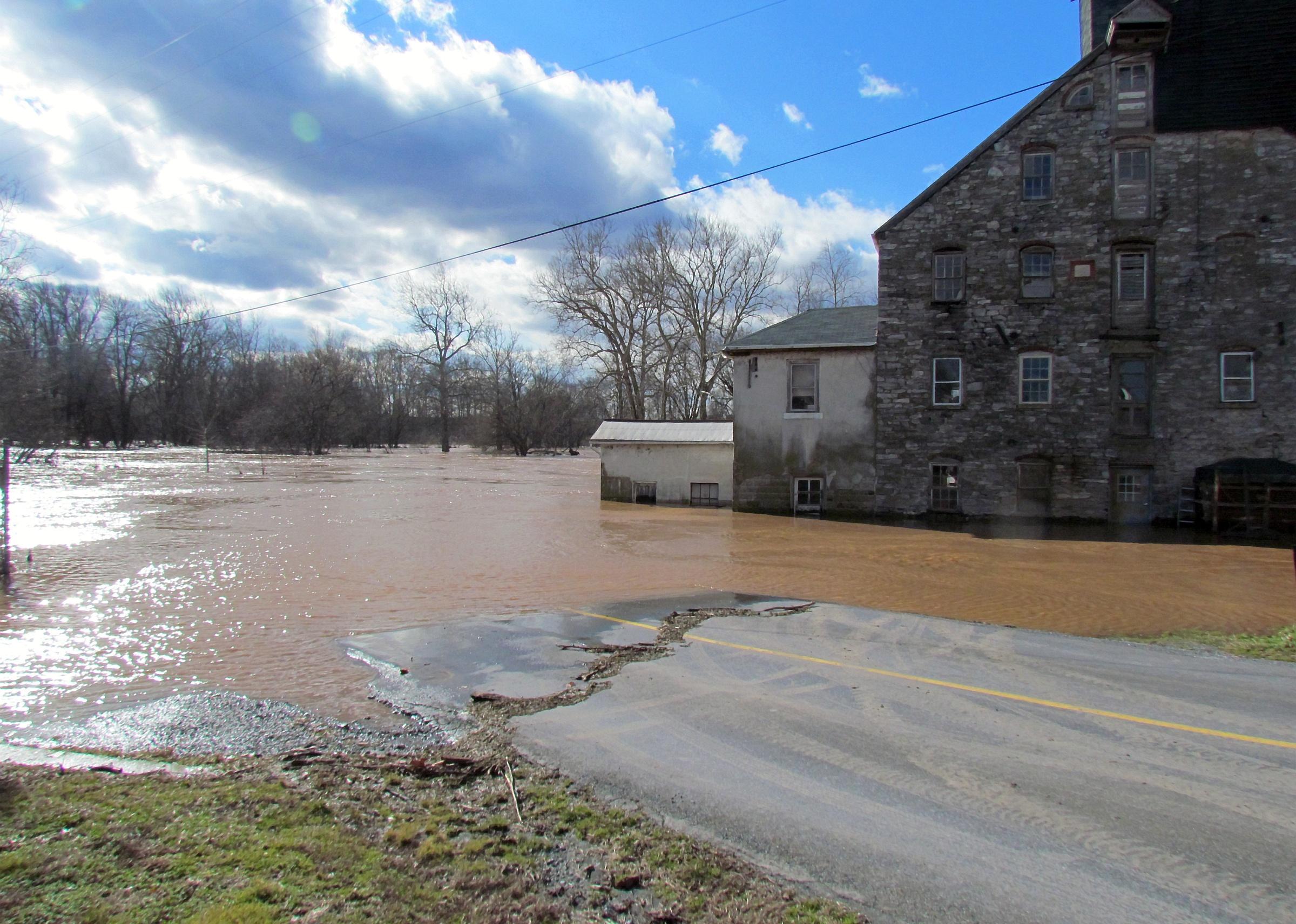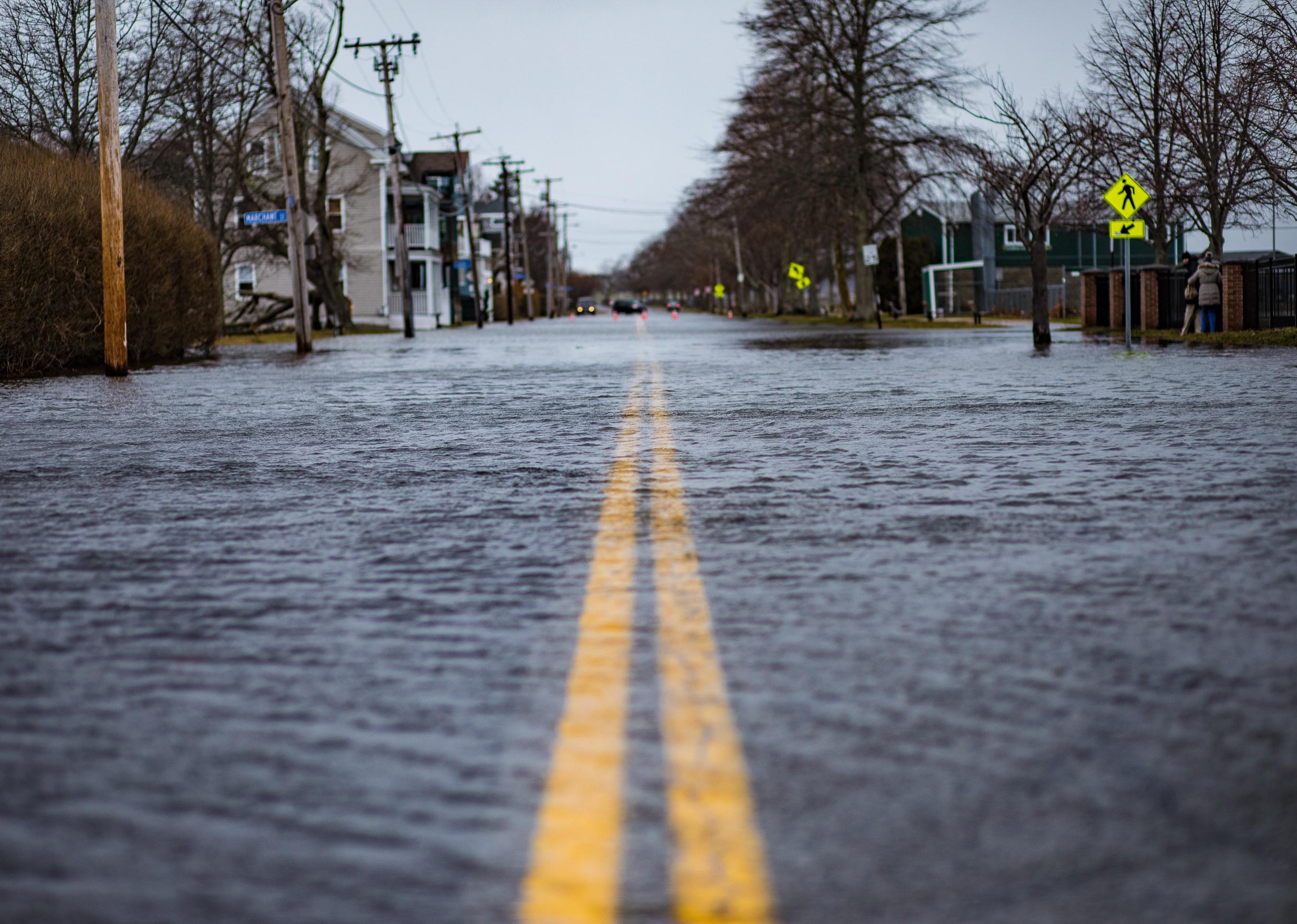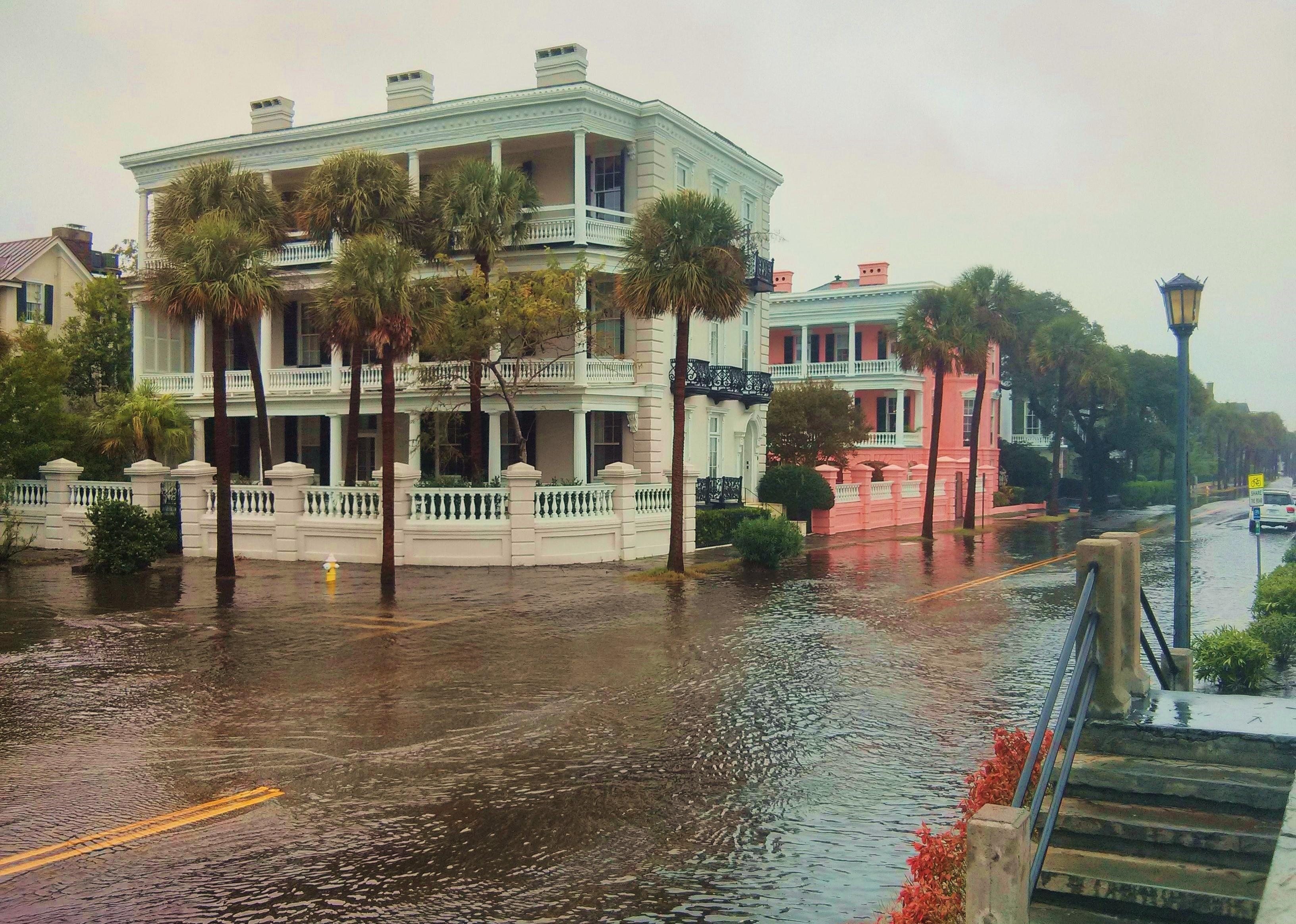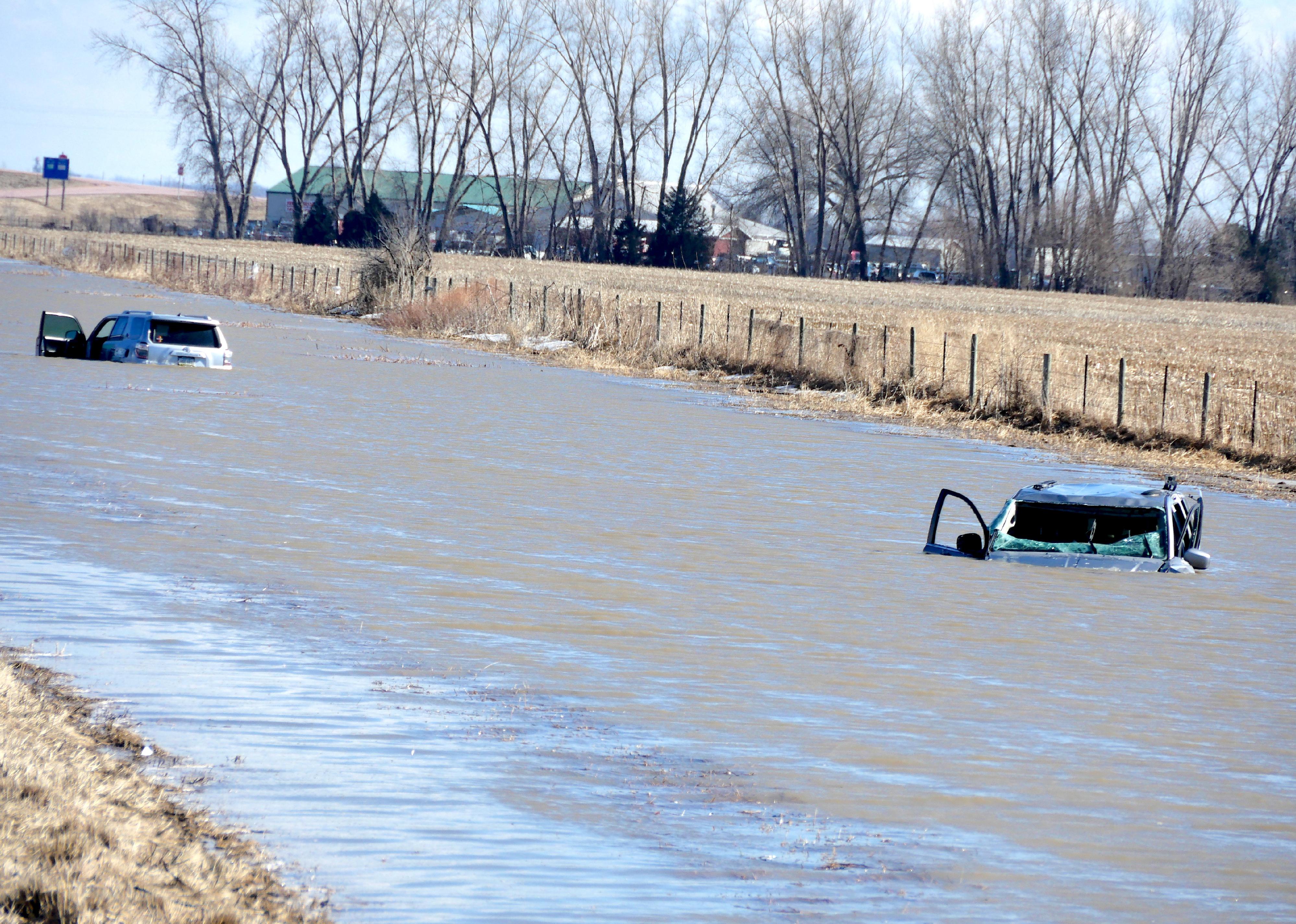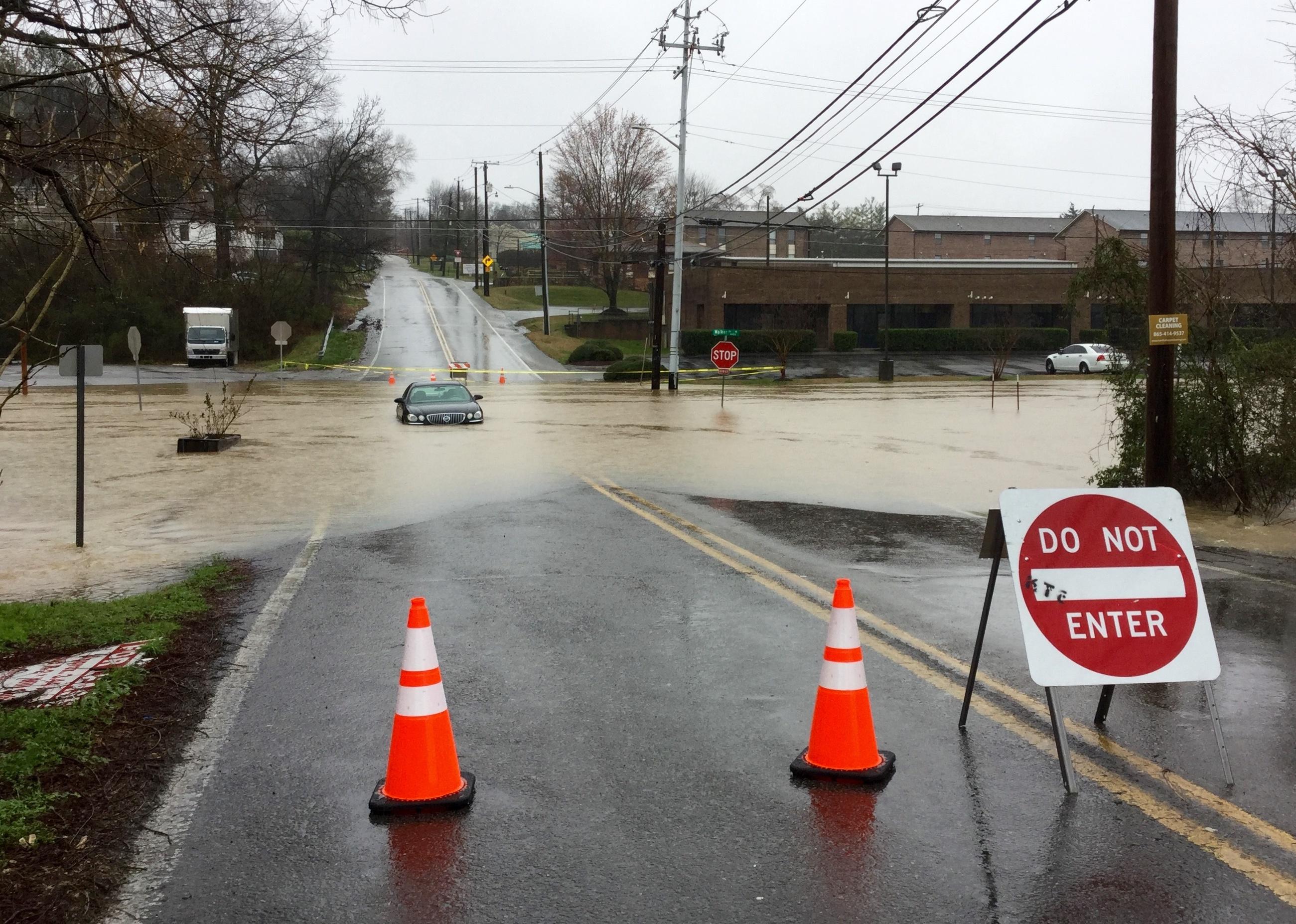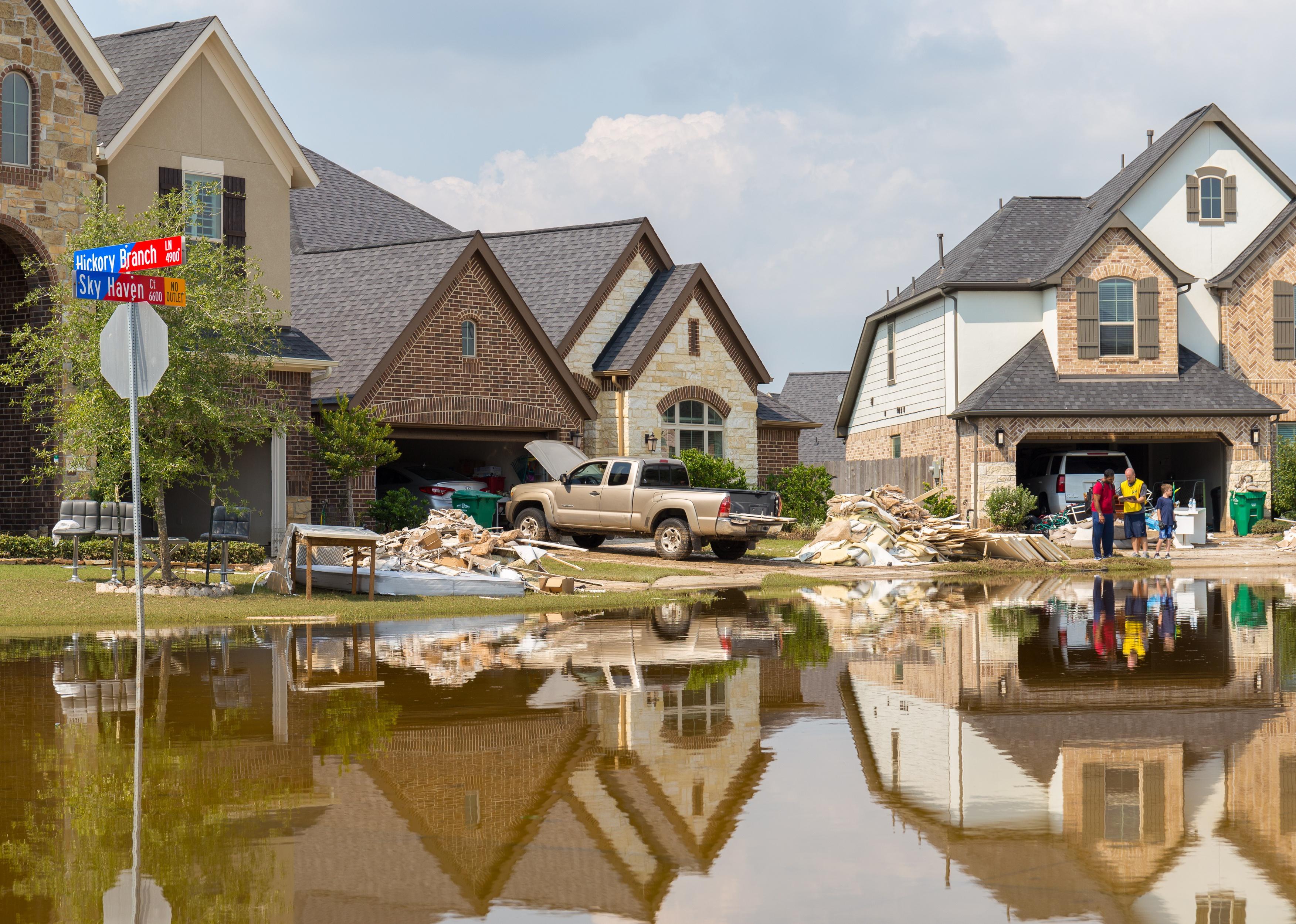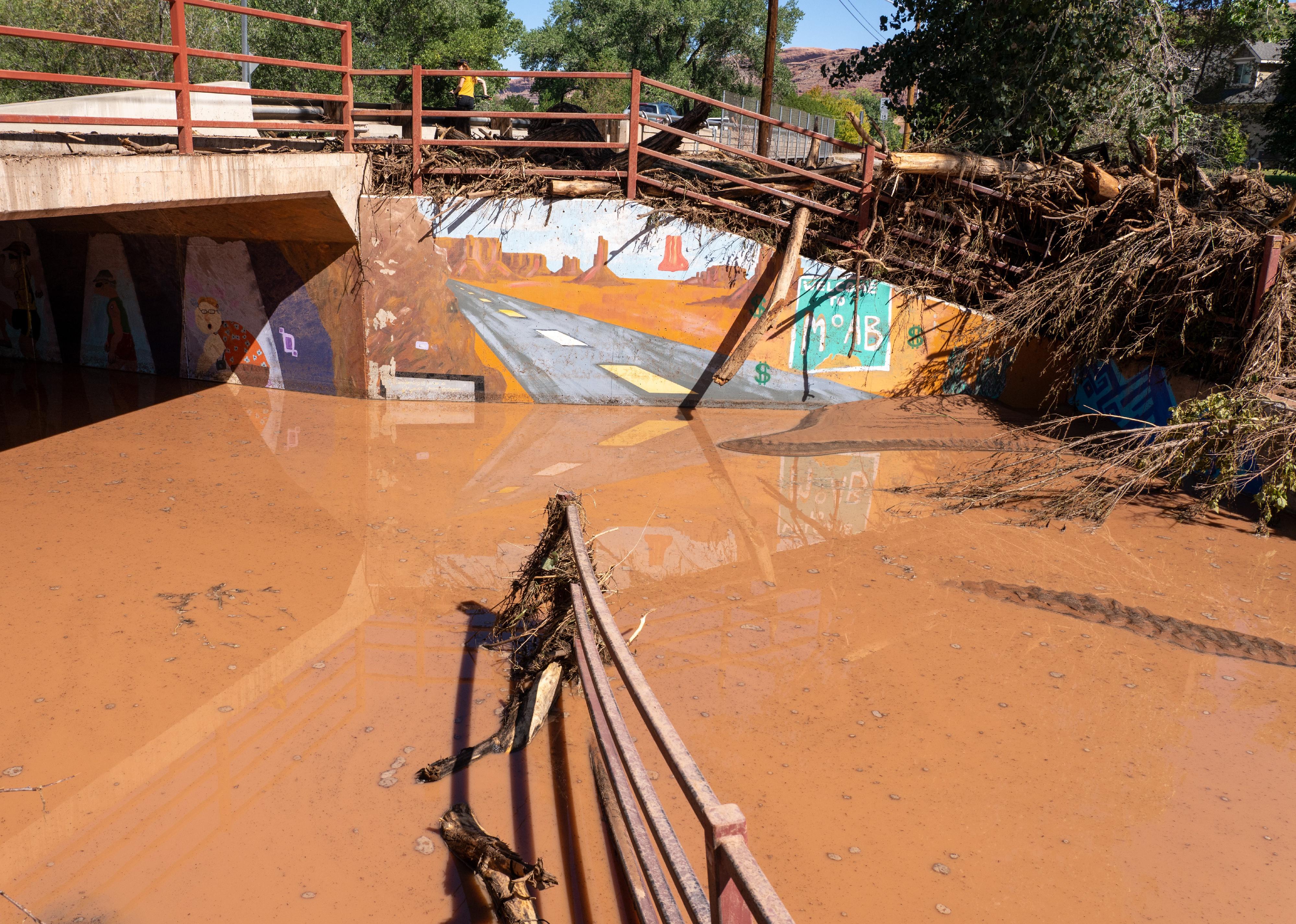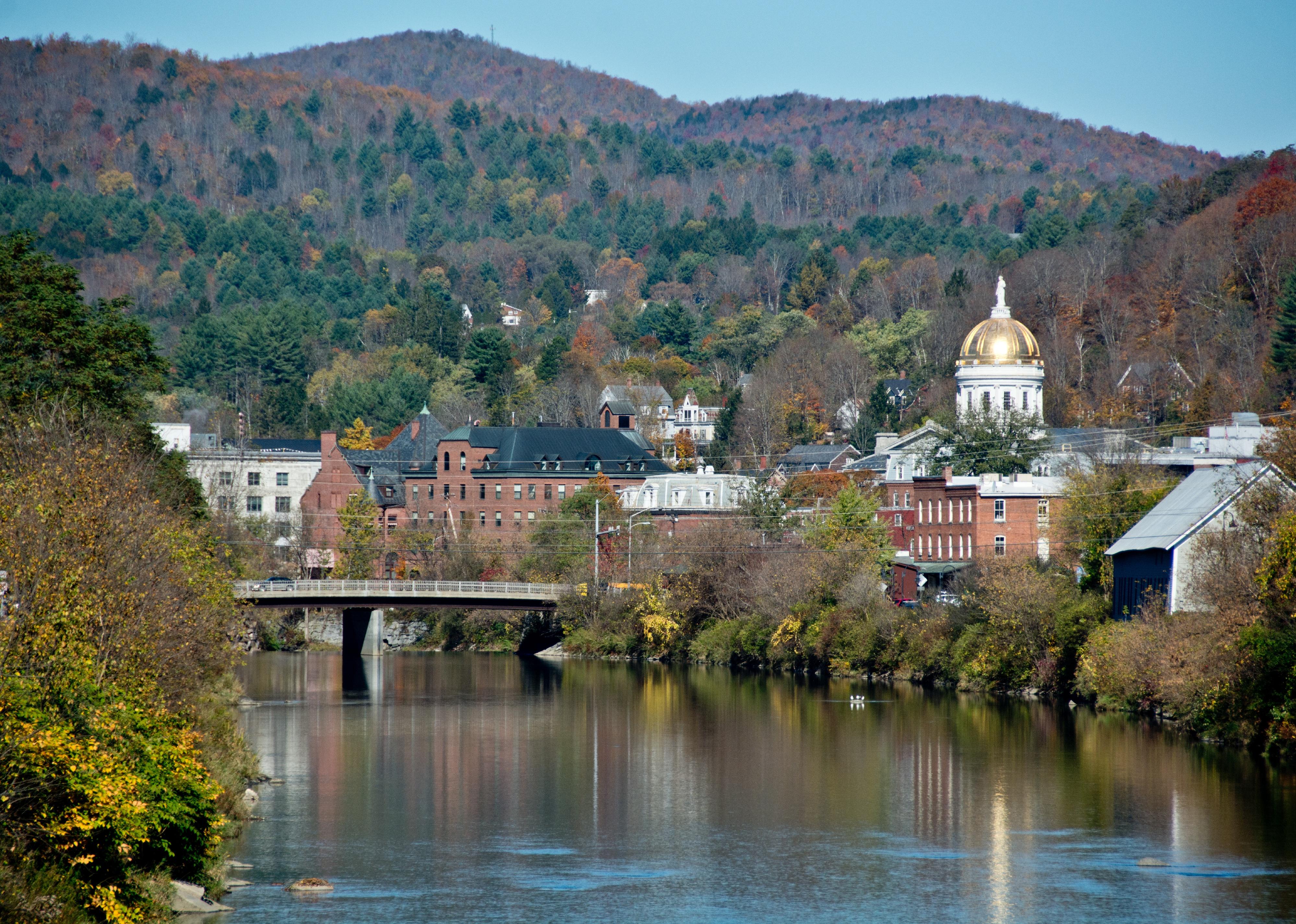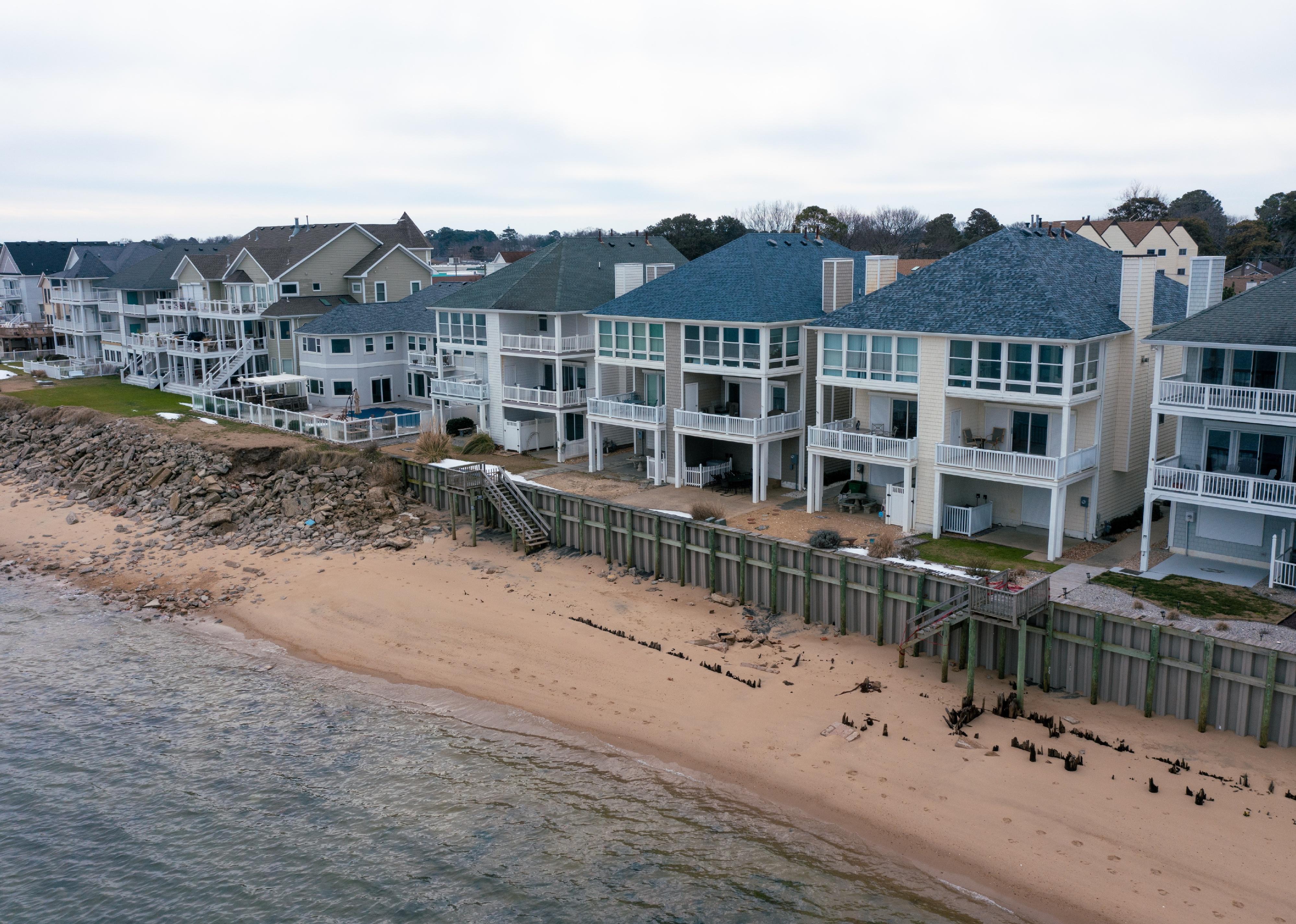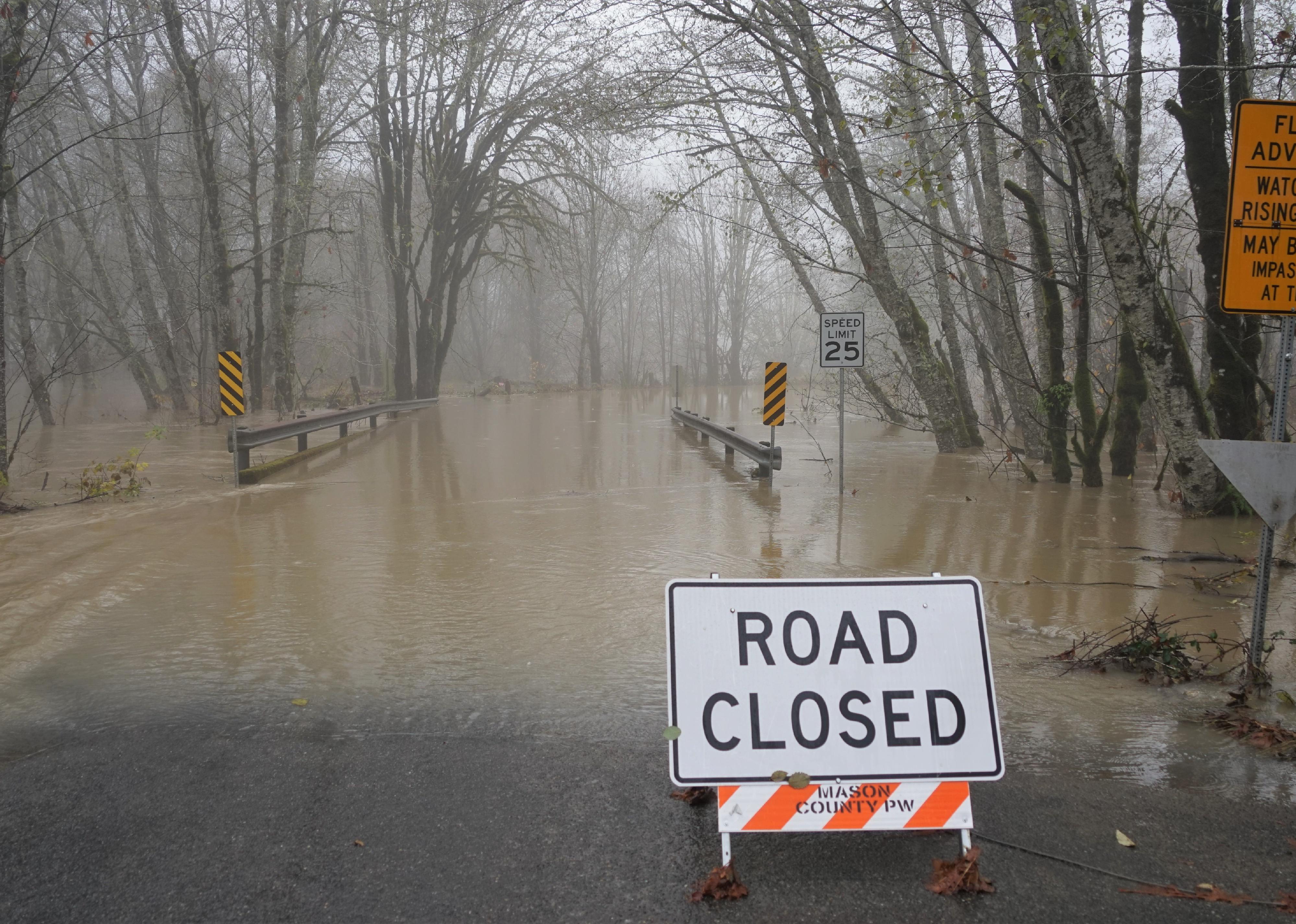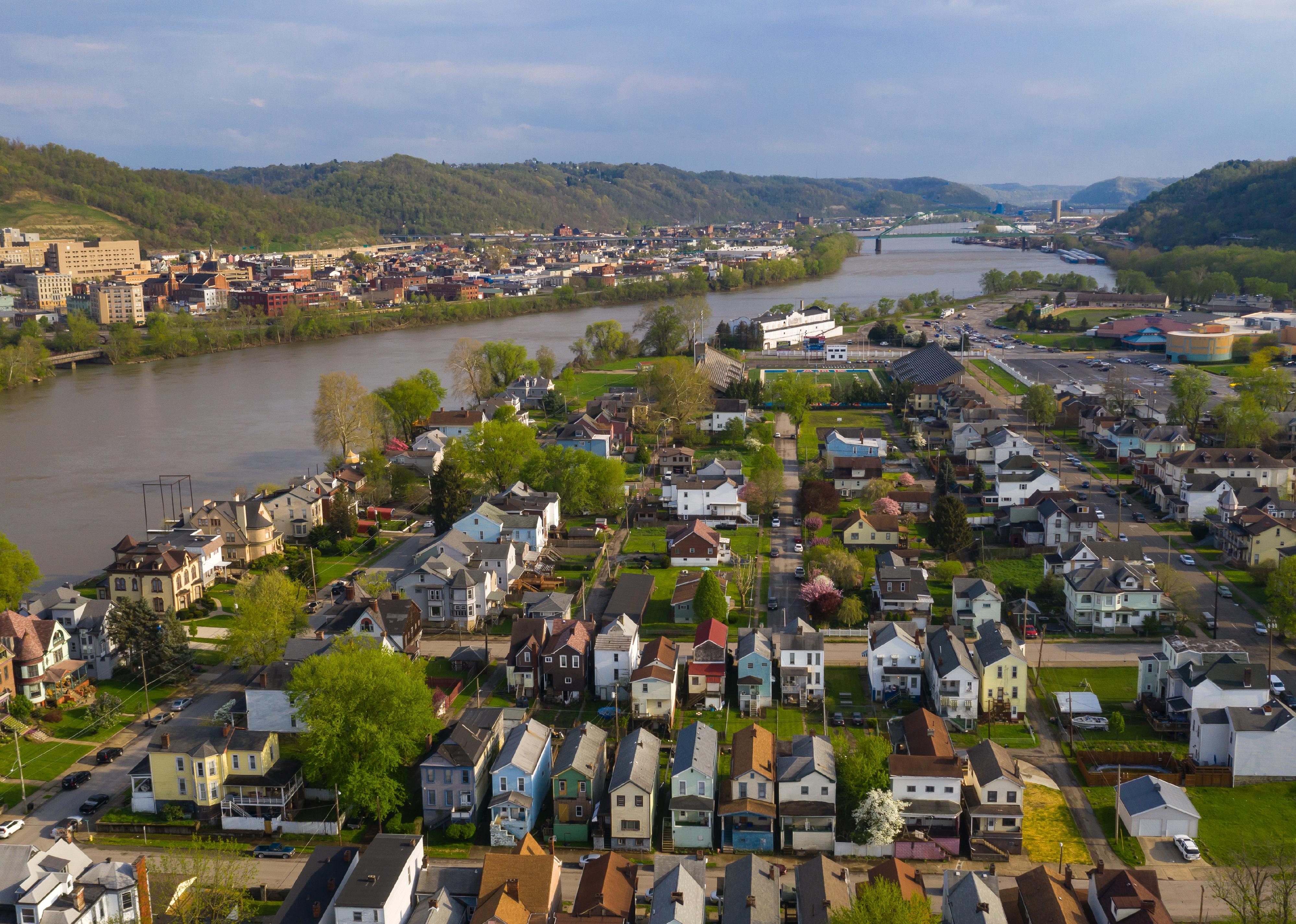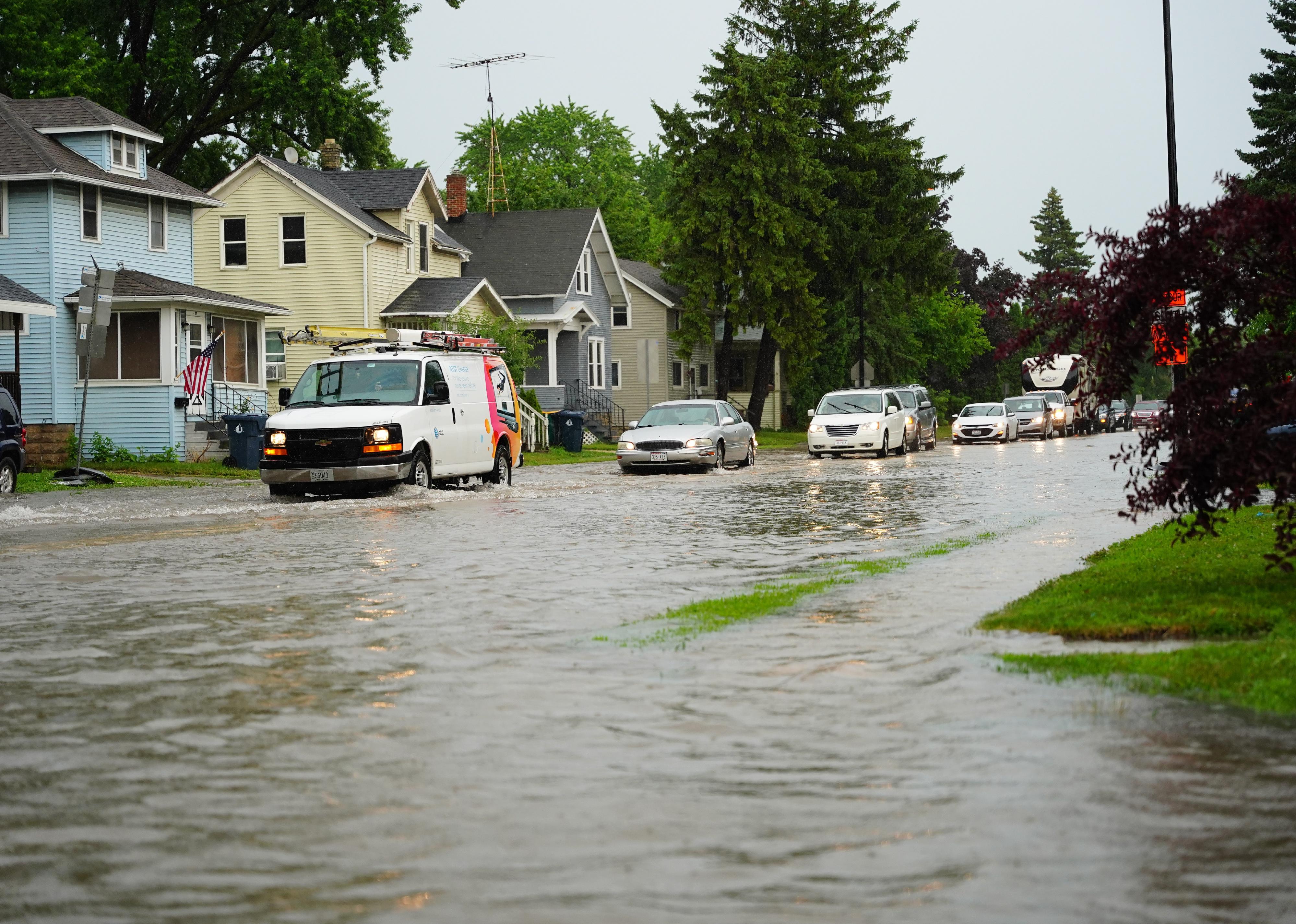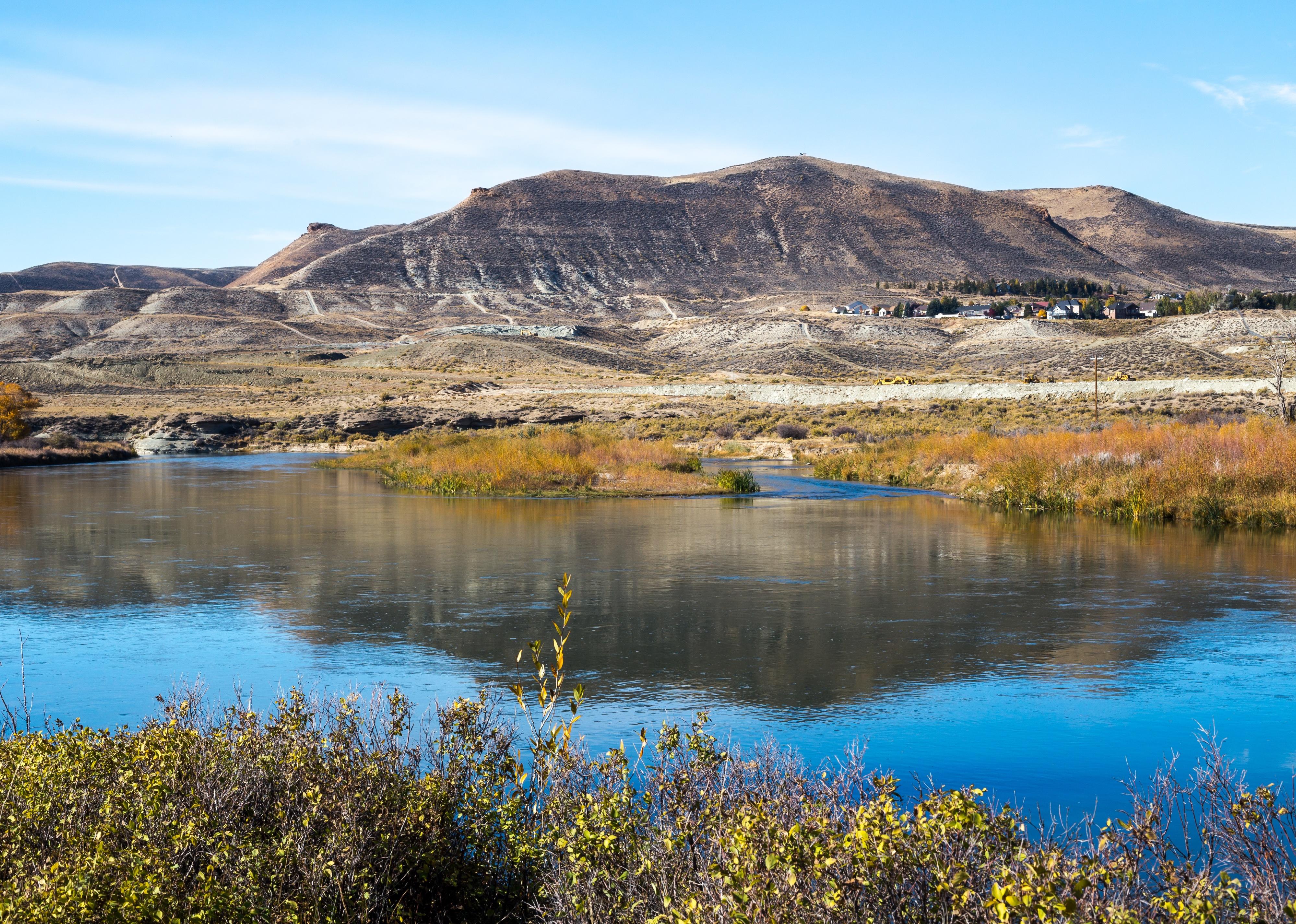How the flood risk has changed in your state, according to FEMA
michelmond // Shutterstock
How the flood risk has changed in your state, according to FEMA
Flooding in Fort Bend County, Texas.
In order to update information about property flood risk, the Federal Emergency Management Administration modified the methodology used in its National Flood Insurance Program evaluations for the first time in 50 years.
Changes in climatic and urban conditions required a rigorous review of the variables taken into account to accurately determine how vulnerable a property is to flood risk. The new costs of insurance policies generated by the national flood insurance system now depend on the results of the latest study, Risk Rating 2.0.
Potential threats have increased for 3.9 million properties out of the 5 million re-diagnosed. Consequently, the cost of insurance premiums was raised, much to the discontent of developers and property owners, especially those in waterfront cities.
The previous methodology tended to overlook the replacement value of any given property, which resulted in inequity for lower-value homes that lay within the same flood plain as higher-value homes. This inequity equated all properties on equal footing for flood risk, with no consideration of the actual value loss for each property, which forced the owners of lower-value homes to purchase insurance packages more costly than was necessary. The new approach now factors in the individual risk for each property or home, which in turn means more valuable—generally waterfront—properties will have their flood insurance premiums rise.
Despite the concern from many high-value homeowners, on a national scale, 86.4% of premiums went up just $10 or less. In 8.6% of cases, the fee increase was somewhere between $10 and $20, while in the remaining 5%, it surpassed the $20 margin. In contrast, the risk rate dropped for 1.2 million properties; as a result, so did the cost of premiums. The revised amount meant a discount of up to $100 for 70.5% of policyholders, while the remaining 29.5% were granted reductions of $50 or more.
Citing the latest data, Stacker dug into how flood insurance premiums will change across every state in the first year of Risk Rating 2.0’s implementation. As of April 2022, all policies must follow the new ratings methodology.
You may also like: U.S. cities with the dirtiest air
![]()
Jens Lambert // Shutterstock
Alabama
Flood waters from the Tennessee River in Huntsville, AL.
52,648 properties with reassessed flood risk
– 11,217 properties with decreased risk
— 28.9% of monthly flood insurance premiums decreasing $50 or more
— 71.1% decreasing between $0 and $50
– 41,431 properties with increased risk
— 88.7% of premiums increasing up to $10
— 7.2% increasing between $10 and $20
— 4.1% increasing over $20
Photos BrianScantlebury // Shutterstock
Alaska
Beluga whale project sign under warning of tidal flooding sign.
2,250 properties with reassessed flood risk
– 1,932 properties with decreased risk
— 26.6% of monthly flood insurance premiums decreasing $50 or more
— 73.4% decreasing between $0 and $50
– 318 properties with increased risk
— 88.4% of premiums increasing up to $10
— 7.2% increasing between $10 and $20
— 4.4% increasing over $20
You Touch Pix of EuToch // Shutterstock
Arizona
Community streets after flash flood in Phoenix, Arizona.
29,261 properties with reassessed flood risk
– 7,312 properties with decreased risk
— 40.9% of monthly flood insurance premiums decreasing $50 or more
— 59.1% decreasing between $0 and $50
– 21,949 properties with increased risk
— 91.0% of premiums increasing up to $10
— 6.4% increasing between $10 and $20
— 2.6% increasing over $20
Sean Pavone // Shutterstock
Arkansas
Little Rock, Arkansas, USA downtown skyline on the Arkansas River.
14,397 properties with reassessed flood risk
– 4,771 properties with decreased risk
— 43.9% of monthly flood insurance premiums decreasing $50 or more
— 56.1% decreasing between $0 and $50
– 9,626 properties with increased risk
— 84.6% of premiums increasing up to $10
— 9.5% increasing between $10 and $20
— 5.9% increasing over $20
Michael Vi // Shutterstock
California
Yellow Caution and Flooded warning signs on barricade installed across two-way street.
214,829 properties with reassessed flood risk
– 57,541 properties with decreased risk
— 38.5% of monthly flood insurance premiums decreasing $50 or more
— 61.5% decreasing between $0 and $50
– 157,288 properties with increased risk
— 86.3% of premiums increasing up to $10
— 8.6% increasing between $10 and $20
— 5.1% increasing over $20
You may also like: U.S. cities with the cleanest air
marekuliasz // Shutterstock
Colorado
Illinois River meanders through Arapaho National Wildlife Refuge near Walden, Colorado.
19,983 properties with reassessed flood risk
– 8,675 properties with decreased risk
— 30.6% of monthly flood insurance premiums decreasing $50 or more
— 69.4% decreasing between $0 and $50
– 11,308 properties with increased risk
— 84.5% of premiums increasing up to $10
— 8.4% increasing between $10 and $20
— 7.1% increasing over $20
Kyle Lee // Shutterstock
Connecticut
Ferry Park Landing Flooded in Rocky Hill, CT.
34,828 properties with reassessed flood risk
– 12,739 properties with decreased risk
— 49.5% of monthly flood insurance premiums decreasing $50 or more
— 50.5% decreasing between $0 and $50
– 22,089 properties with increased risk
— 73.7% of premiums increasing up to $10
— 11.9% increasing between $10 and $20
— 14.3% increasing over $20
Real Window Creative // Shutterstock
Delaware
Saturated early morning light hits the buildings and architecture of downtown Wilmington, Delaware.
26,147 properties with reassessed flood risk
– 9,845 properties with decreased risk
— 21.7% of monthly flood insurance premiums decreasing $50 or more
— 78.3% decreasing between $0 and $50
– 16,302 properties with increased risk
— 83.0% of premiums increasing up to $10
— 13.4% increasing between $10 and $20
— 3.5% increasing over $20
Bilanol // Shutterstock
Florida
Flooded house by hurricane Ian rainfall in Florida residential area.
1.7M properties with reassessed flood risk
– 342,109 properties with decreased risk
— 13.2% of monthly flood insurance premiums decreasing $50 or more
— 86.8% decreasing between $0 and $50
– 1.4M properties with increased risk
— 85.0% of premiums increasing up to $10
— 9.7% increasing between $10 and $20
— 5.3% increasing over $20
Gus Valente // Shutterstock
Georgia
River overflowed after a storm in Blue Ridge, Georgia.
81,998 properties with reassessed flood risk
– 19,929 properties with decreased risk
— 31.9% of monthly flood insurance premiums decreasing $50 or more
— 68.1% decreasing between $0 and $50
– 62,069 properties with increased risk
— 91.3% of premiums increasing up to $10
— 6.1% increasing between $10 and $20
— 2.5% increasing over $20
You may also like: 25 endangered animals that only live in America
Uheheu // Shutterstock
Hawaii
Flooding in Hawaii after a hurricane brought record amounts of rain.
61,382 properties with reassessed flood risk
– 7,924 properties with decreased risk
— 38.9% of monthly flood insurance premiums decreasing $50 or more
— 61.1% decreasing between $0 and $50
– 53,458 properties with increased risk
— 90.0% of premiums increasing up to $10
— 5.3% increasing between $10 and $20
— 4.8% increasing over $20
Ric Schafer // Shutterstock
Idaho
The beautiful Snake River running through Idaho Falls in Idaho.
5,645 properties with reassessed flood risk
– 1,580 properties with decreased risk
— 37.8% of monthly flood insurance premiums decreasing $50 or more
— 62.2% decreasing between $0 and $50
– 4,065 properties with increased risk
— 88.2% of premiums increasing up to $10
— 7.8% increasing between $10 and $20
— 4.0% increasing over $20
Jon Rehg // Shutterstock
Illinois
Car submerged under flood water in small river town, Grafton, Illinois.
37,677 properties with reassessed flood risk
– 15,714 properties with decreased risk
— 43.9% of monthly flood insurance premiums decreasing $50 or more
— 56.1% decreasing between $0 and $50
– 21,963 properties with increased risk
— 84.0% of premiums increasing up to $10
— 9.3% increasing between $10 and $20
— 6.6% increasing over $20
Tony Campbell // Shutterstock
Indiana
Flood waters overtake a town in Indiana.
20,081 properties with reassessed flood risk
– 9,162 properties with decreased risk
— 48.4% of monthly flood insurance premiums decreasing $50 or more
— 51.6% decreasing between $0 and $50
– 10,919 properties with increased risk
— 86.9% of premiums increasing up to $10
— 8.2% increasing between $10 and $20
— 4.9% increasing over $20
Michael Rolands // Shutterstock
Iowa
Flooding causes closures on a rural Iowa road.
12,637 properties with reassessed flood risk
– 4,670 properties with decreased risk
— 44.3% of monthly flood insurance premiums decreasing $50 or more
— 55.7% decreasing between $0 and $50
– 7,967 properties with increased risk
— 82.0% of premiums increasing up to $10
— 7.8% increasing between $10 and $20
— 10.2% increasing over $20
You may also like: Major cities with the biggest projected water shortages by 2040
KSwinicki // Shutterstock
Kansas
Maple Street closing due to Cowskin Creek flooding.
9,565 properties with reassessed flood risk
– 3,630 properties with decreased risk
— 42.3% of monthly flood insurance premiums decreasing $50 or more
— 57.7% decreasing between $0 and $50
– 5,935 properties with increased risk
— 90.2% of premiums increasing up to $10
— 5.0% increasing between $10 and $20
— 4.8% increasing over $20
Brymer // Shutterstock
Kentucky
Flooding on a street with top of a fire hydrant visible.
19,361 properties with reassessed flood risk
– 5,523 properties with decreased risk
— 42.0% of monthly flood insurance premiums decreasing $50 or more
— 58.0% decreasing between $0 and $50
– 13,838 properties with increased risk
— 76.3% of premiums increasing up to $10
— 14.7% increasing between $10 and $20
— 9.0% increasing over $20
ccpixx photography // Shutterstock
Louisiana
Canal street in Delcambre, during Hurricane Laura.
495,923 properties with reassessed flood risk
– 101,171 properties with decreased risk
— 36.9% of monthly flood insurance premiums decreasing $50 or more
— 63.1% decreasing between $0 and $50
– 394,752 properties with increased risk
— 87.0% of premiums increasing up to $10
— 8.7% increasing between $10 and $20
— 4.3% increasing over $20
Arthur Villator // Shutterstock
Maine
A storm wave crashes over two telephone poles and the roof of a beach front house.
7,746 properties with reassessed flood risk
– 2,605 properties with decreased risk
— 35.9% of monthly flood insurance premiums decreasing $50 or more
— 64.1% decreasing between $0 and $50
– 5,141 properties with increased risk
— 76.8% of premiums increasing up to $10
— 9.9% increasing between $10 and $20
— 13.3% increasing over $20
Jeramey Lende // Shutterstock
Maryland
A flooded road with traffic cones and a closed gate on a private installation.
64,942 properties with reassessed flood risk
– 39,903 properties with decreased risk
— 14.3% of monthly flood insurance premiums decreasing $50 or more
— 85.7% decreasing between $0 and $50
– 25,039 properties with increased risk
— 92.1% of premiums increasing up to $10
— 5.4% increasing between $10 and $20
— 2.4% increasing over $20
You may also like: Beginner’s guide to composting
Keith J Finks // Shutterstock
Massachusetts
A winter Nor’easter storm surge floods Boston Harbor.
58,501 properties with reassessed flood risk
– 22,594 properties with decreased risk
— 45.0% of monthly flood insurance premiums decreasing $50 or more
— 55.0% decreasing between $0 and $50
– 35,907 properties with increased risk
— 80.2% of premiums increasing up to $10
— 9.5% increasing between $10 and $20
— 10.3% increasing over $20
Pbd1950 // Shutterstock
Michigan
Lakeshore flooding after several days of torrential rain.
20,481 properties with reassessed flood risk
– 11,120 properties with decreased risk
— 43.7% of monthly flood insurance premiums decreasing $50 or more
— 56.3% decreasing between $0 and $50
– 9,361 properties with increased risk
— 90.2% of premiums increasing up to $10
— 6.7% increasing between $10 and $20
— 3.1% increasing over $20
Jacob Boomsma // Shutterstock
Minnesota
Rochester in southeast Minnesota.
10,541 properties with reassessed flood risk
– 3,093 properties with decreased risk
— 38.4% of monthly flood insurance premiums decreasing $50 or more
— 61.6% decreasing between $0 and $50
– 7,448 properties with increased risk
— 90.8% of premiums increasing up to $10
— 5.3% increasing between $10 and $20
— 3.9% increasing over $20
Chad Robertson Media // Shutterstock
Mississippi
Pearl River flood water rising in neighborhoods in Jackson, MS.
61,317 properties with reassessed flood risk
– 10,047 properties with decreased risk
— 40.6% of monthly flood insurance premiums decreasing $50 or more
— 59.4% decreasing between $0 and $50
– 51,270 properties with increased risk
— 87.1% of premiums increasing up to $10
— 7.6% increasing between $10 and $20
— 5.3% increasing over $20
Gino Santa Maria // Shutterstock
Missouri
Flood waters submerge highway signs in Valley Park, Missouri.
19,706 properties with reassessed flood risk
– 5,839 properties with decreased risk
— 45.8% of monthly flood insurance premiums decreasing $50 or more
— 54.2% decreasing between $0 and $50
– 13,867 properties with increased risk
— 77.3% of premiums increasing up to $10
— 12.3% increasing between $10 and $20
— 10.4% increasing over $20
You may also like: Animal species that may become extinct in our lifetime
Jacob Boomsma // Shutterstock
Montana
Aerial View of the Town of Gardiner, Montana
4,339 properties with reassessed flood risk
– 1,617 properties with decreased risk
— 38.8% of monthly flood insurance premiums decreasing $50 or more
— 61.2% decreasing between $0 and $50
– 2,722 properties with increased risk
— 92.3% of premiums increasing up to $10
— 4.8% increasing between $10 and $20
— 2.9% increasing over $20
robert2001 // Shutterstock
Nebraska
Flooding in Northeast Nebraska.
9,129 properties with reassessed flood risk
– 3,964 properties with decreased risk
— 50.1% of monthly flood insurance premiums decreasing $50 or more
— 49.9% decreasing between $0 and $50
– 5,165 properties with increased risk
— 80.2% of premiums increasing up to $10
— 8.1% increasing between $10 and $20
— 11.7% increasing over $20
Jeffrey J Coleman // Shutterstock
Nevada
The entrance to the Bellagio under water after a storm floods the strip.
10,586 properties with reassessed flood risk
– 2,196 properties with decreased risk
— 49.5% of monthly flood insurance premiums decreasing $50 or more
— 50.5% decreasing between $0 and $50
– 8,390 properties with increased risk
— 93.1% of premiums increasing up to $10
— 3.6% increasing between $10 and $20
— 3.3% increasing over $20
Sean Pavone // Shutterstock
New Hampshire
Portsmouth, New Hampshire, town skyline on the Piscataqua River.
7,747 properties with reassessed flood risk
– 2,675 properties with decreased risk
— 36.6% of monthly flood insurance premiums decreasing $50 or more
— 63.4% decreasing between $0 and $50
– 5,072 properties with increased risk
— 76.4% of premiums increasing up to $10
— 13.4% increasing between $10 and $20
— 10.1% increasing over $20
Tippman98x // Shutterstock
New Jersey
Aerial drone of a flooded Mount Holly, New Jersey.
217,178 properties with reassessed flood risk
– 46,318 properties with decreased risk
— 43.0% of monthly flood insurance premiums decreasing $50 or more
— 57.0% decreasing between $0 and $50
– 170,860 properties with increased risk
— 80.3% of premiums increasing up to $10
— 13.1% increasing between $10 and $20
— 6.6% increasing over $20
You may also like: Major cities with the biggest projected water shortages by 2040
gmeland // Shutterstock
New Mexico
Balloons over the Rio Grande.
11,556 properties with reassessed flood risk
– 4,116 properties with decreased risk
— 43.6% of monthly flood insurance premiums decreasing $50 or more
— 56.4% decreasing between $0 and $50
– 7,440 properties with increased risk
— 86.1% of premiums increasing up to $10
— 10.5% increasing between $10 and $20
— 3.4% increasing over $20
Kobby Dagan // Shutterstock
New York
Flooded road in downtown Manhattan.
171,099 properties with reassessed flood risk
– 54,008 properties with decreased risk
— 44.3% of monthly flood insurance premiums decreasing $50 or more
— 55.7% decreasing between $0 and $50
– 117,091 properties with increased risk
— 80.1% of premiums increasing up to $10
— 10.3% increasing between $10 and $20
— 9.6% increasing over $20
Jeremy Warner // Shutterstock
North Carolina
Motorists inspect a road flooded in Waxhaw, North Carolina.
139,842 properties with reassessed flood risk
– 35,701 properties with decreased risk
— 33.2% of monthly flood insurance premiums decreasing $50 or more
— 66.8% decreasing between $0 and $50
– 104,141 properties with increased risk
— 88.1% of premiums increasing up to $10
— 8.1% increasing between $10 and $20
— 3.7% increasing over $20
John Huntington // Shutterstock
North Dakota
Flooding in North Dakota.
13,161 properties with reassessed flood risk
– 5,020 properties with decreased risk
— 20.1% of monthly flood insurance premiums decreasing $50 or more
— 79.9% decreasing between $0 and $50
– 8,141 properties with increased risk
— 96.1% of premiums increasing up to $10
— 2.4% increasing between $10 and $20
— 1.5% increasing over $20
Bryan Busovicki // Shutterstock
Ohio
Flooding along the Ohio River in Cincinnati, Ohio.
29,044 properties with reassessed flood risk
– 13,074 properties with decreased risk
— 44.2% of monthly flood insurance premiums decreasing $50 or more
— 55.8% decreasing between $0 and $50
– 15,970 properties with increased risk
— 83.0% of premiums increasing up to $10
— 10.7% increasing between $10 and $20
— 6.4% increasing over $20
You may also like: How long it takes 50 common items to decompose
Nick Fox // Shutterstock
Oklahoma
Sunset skyline of Tulsa, Oklahoma with Arkansas River in the foreground.
13,024 properties with reassessed flood risk
– 3,851 properties with decreased risk
— 46.0% of monthly flood insurance premiums decreasing $50 or more
— 54.0% decreasing between $0 and $50
– 9,173 properties with increased risk
— 86.3% of premiums increasing up to $10
— 7.9% increasing between $10 and $20
— 5.8% increasing over $20
Catherine Avilez // Shutterstock
Oregon
A car turns around after encountering a flooded field streaming across a rural road.
24,850 properties with reassessed flood risk
– 7,511 properties with decreased risk
— 39.5% of monthly flood insurance premiums decreasing $50 or more
— 60.5% decreasing between $0 and $50
– 17,339 properties with increased risk
— 83.1% of premiums increasing up to $10
— 11.2% increasing between $10 and $20
— 5.7% increasing over $20
Richard L. Bowman // Shutterstock
Pennsylvania
The flooded Conestoga River enters a water powered flour mill near Leola, PA.
51,555 properties with reassessed flood risk
– 15,572 properties with decreased risk
— 47.6% of monthly flood insurance premiums decreasing $50 or more
— 52.4% decreasing between $0 and $50
– 35,983 properties with increased risk
— 79.6% of premiums increasing up to $10
— 10.7% increasing between $10 and $20
— 9.7% increasing over $20
AFP // Getty Images
Puerto Rico
A man walks down a flooded street in the Juana Matos neighborhood of Catano, Puerto Rico.
7,987 properties with reassessed flood risk
– 3,268 properties with decreased risk
— 38.2% of monthly flood insurance premiums decreasing $50 or more
— 61.8% decreasing between $0 and $50
– 4,719 properties with increased risk
— 95.9% of premiums increasing up to $10
— 1.8% increasing between $10 and $20
— 2.3% increasing over $20
Olga Enger // Shutterstock
Rhode Island
The flooded streets of Newport, Rhode Island after a storm.
12,001 properties with reassessed flood risk
– 5,520 properties with decreased risk
— 50.4% of monthly flood insurance premiums decreasing $50 or more
— 49.6% decreasing between $0 and $50
– 6,481 properties with increased risk
— 86.6% of premiums increasing up to $10
— 7.5% increasing between $10 and $20
— 5.9% increasing over $20
You may also like: Top 10 best and worst foods for the environment
David AvRutick // Shutterstock
South Carolina
Flooded Charleston.
208,559 properties with reassessed flood risk
– 53,213 properties with decreased risk
— 24.9% of monthly flood insurance premiums decreasing $50 or more
— 75.1% decreasing between $0 and $50
– 155,346 properties with increased risk
— 88.6% of premiums increasing up to $10
— 8.0% increasing between $10 and $20
— 3.4% increasing over $20
Kid Dog Travel // Shutterstock
South Dakota
Two cars completely submerged in water next to South Dakota I-29.
3,743 properties with reassessed flood risk
– 1,148 properties with decreased risk
— 51.4% of monthly flood insurance premiums decreasing $50 or more
— 48.6% decreasing between $0 and $50
– 2,595 properties with increased risk
— 86.5% of premiums increasing up to $10
— 7.4% increasing between $10 and $20
— 6.1% increasing over $20
LuckyTenn7 // Shutterstock
Tennessee
Abandoned car stuck in flooded street.
27,507 properties with reassessed flood risk
– 7,581 properties with decreased risk
— 37.6% of monthly flood insurance premiums decreasing $50 or more
— 62.4% decreasing between $0 and $50
– 19,926 properties with increased risk
— 81.9% of premiums increasing up to $10
— 10.9% increasing between $10 and $20
— 7.2% increasing over $20
michelmond // Shutterstock
Texas
Houston suburb Riverstone after Hurricane Harvey and heavy floods.
768,537 properties with reassessed flood risk
– 106,720 properties with decreased risk
— 36.5% of monthly flood insurance premiums decreasing $50 or more
— 63.5% decreasing between $0 and $50
– 661,817 properties with increased risk
— 91.8% of premiums increasing up to $10
— 4.9% increasing between $10 and $20
— 3.2% increasing over $20
VW Pics // Getty Images
Utah
Guardrail torn from its mountings and bent over after flash flooding in Moab, Utah.
3,755 properties with reassessed flood risk
– 2,006 properties with decreased risk
— 22.4% of monthly flood insurance premiums decreasing $50 or more
— 77.6% decreasing between $0 and $50
– 1,749 properties with increased risk
— 93.1% of premiums increasing up to $10
— 4.6% increasing between $10 and $20
— 2.3% increasing over $20
You may also like: States with the worst droughts
Erika J Mitchell // Shutterstock
Vermont
Montpelier, Vermont sits astride the Winooski River in the center of the state.
3,330 properties with reassessed flood risk
– 1,103 properties with decreased risk
— 55.6% of monthly flood insurance premiums decreasing $50 or more
— 44.4% decreasing between $0 and $50
– 2,227 properties with increased risk
— 74.9% of premiums increasing up to $10
— 13.8% increasing between $10 and $20
— 11.3% increasing over $20
Kyle J Little // Shutterstock
Virginia
Aerial view of homes right on the shore of the Chesapeake Bay in Norfolk, Virginia.
104,781 properties with reassessed flood risk
– 46,811 properties with decreased risk
— 23.2% of monthly flood insurance premiums decreasing $50 or more
— 76.8% decreasing between $0 and $50
– 57,970 properties with increased risk
— 87.9% of premiums increasing up to $10
— 8.8% increasing between $10 and $20
— 3.3% increasing over $20
Terrence J Allison // Shutterstock
Washington
Flood zone area and road closed sign.
32,547 properties with reassessed flood risk
– 10,717 properties with decreased risk
— 42.3% of monthly flood insurance premiums decreasing $50 or more
— 57.7% decreasing between $0 and $50
– 21,830 properties with increased risk
— 81.9% of premiums increasing up to $10
— 11.8% increasing between $10 and $20
— 6.4% increasing over $20
Sean Pavone // Shutterstock
Washington D.C.
Washington D.C. skyline on the Potomac River.
2,396 properties with reassessed flood risk
– 1,737 properties with decreased risk
— 10.6% of monthly flood insurance premiums decreasing $50 or more
— 89.4% decreasing between $0 and $50
– 659 properties with increased risk
— 88.3% of premiums increasing up to $10
— 6.4% increasing between $10 and $20
— 5.3% increasing over $20
Real Window Creative // Shutterstock
West Virginia
Structures dot the landscape of Wheeling Island in West Virgina.
13,337 properties with reassessed flood risk
– 2,325 properties with decreased risk
— 49.5% of monthly flood insurance premiums decreasing $50 or more
— 50.5% decreasing between $0 and $50
– 11,012 properties with increased risk
— 72.2% of premiums increasing up to $10
— 17.6% increasing between $10 and $20
— 10.2% increasing over $20
You may also like: 25 of the most expensive science experiments in human history
Aaron of L.A. Photography // Shutterstock
Wisconsin
Citizens of Fond du Lac drive through the flooded streets.
12,949 properties with reassessed flood risk
– 5,669 properties with decreased risk
— 44.9% of monthly flood insurance premiums decreasing $50 or more
— 55.1% decreasing between $0 and $50
– 7,280 properties with increased risk
— 90.5% of premiums increasing up to $10
— 6.2% increasing between $10 and $20
— 3.4% increasing over $20
Victoria Ditkovsky // Shutterstock
Wyoming
Autumn colors on the shores of Green River, Wyoming.
1,705 properties with reassessed flood risk
– 561 properties with decreased risk
— 49.2% of monthly flood insurance premiums decreasing $50 or more
— 50.8% decreasing between $0 and $50
– 1,144 properties with increased risk
— 88.9% of premiums increasing up to $10
— 6.6% increasing between $10 and $20
— 4.5% increasing over $20
